 |
by Lawrence Bonk on (#6XYPK)
The Nothing Phone 3 is getting an official release for US customers. The handset will be available to purchase from Amazon or directly from the company, according to a report by TechCrunch. Nothing CEO Carl Pei has been teasing this news since April, but now it's official.Canadians will also be able to get in on the retail action, as Nothing has inked a deal with Best Buy to sell the new handset in the region. The phone goes on sale next month.The company has produced eight handsets since forming back in 2020, but only the Phone 2 has made it to general sale in the US. For the other models, users would have to buy a unit via a beta program and there was no after-sale support. So this is good news for North Americans who are tired of Samsung and Apple.
|
 Engadget is a web magazine with obsessive daily coverage of everything new in gadgets and consumer electronics
Engadget is a web magazine with obsessive daily coverage of everything new in gadgets and consumer electronics
| Link | https://www.engadget.com/ |
| Feed | https://www.engadget.com/rss.xml |
| Copyright | copyright Yahoo 2026 |
| Updated | 2026-01-07 10:02 |
 |
by Will Shanklin on (#6XYK8)
Here's an AI-government collaboration of a less... unsettling variety than some. Google DeepMind is teaming up with the National Hurricane Center (NHC) for tropical cyclone season. The AI research lab claims it can predict hurricane paths and intensities with at least the same accuracy as traditional methods.NHC forecasters have already begun using DeepMind's AI model. Google says they're designed to support, not replace, human NHC forecasters. (Although President Trump's National Weather Service cuts have already reduced its headcount.) The company is also careful to repeatedly describe its models as "experimental."Google claims that its models offer fewer trade-offs than physics-based predictions. The more accurate those methods are at forecasting a hurricane's path, the worse they are at predicting its intensity. (And vice versa.) The company says its experimental system offers "state-of-the-art" accuracy for both.DeepMind backs that up with data from real-life storms over the last two years. On average, its five-day hurricane track prediction gets 87 miles closer to the storm's actual path than ENS, a widely used traditional model. Google's was comparable to a 3.5-day prediction model. In other words, it's like gaining an extra 1.5 days of warning with the same level of confidence. The company says such an improvement typically takes over a decade to achieve.GoogleAlongside the NHC collab, Google is launching a new website that you can try. Now in a public preview, Weather Lab lets you see the AI storm predictions. It lets you view both live and historical predictions. You can even compare them to physics-based models to see how the AI version measures up.It's important not to treat Weather Lab's experimental forecasts as official. But the website could come in handy if you live in Hurricane Alley. You can check it out now.This article originally appeared on Engadget at https://www.engadget.com/ai/google-deepmind-is-sharing-its-ai-forecasts-with-the-national-weather-service-173506456.html?src=rss
|
 |
by Lawrence Bonk on (#6XYK9)
Star Trek: Strange New Worlds will only visit around 26 strange new worlds before shuttling into that cancellation sunset. The show will end with a truncated fifth season of six episodes, according to reporting by Deadline.This news is relatively surprising, given that Strange New Worlds seems like the most popular and successful show of the modern era. However, not a single newer Trek series has made it past five seasons, so maybe that's just the way things go now. It's worth remembering that Captain Kirk's narration in the original 1960s Star Trek spoke of a five-year mission.We're deeply grateful to Paramount+ for the chance to complete our five-season mission, just as we envisioned it, alongside our extraordinary cast and crew. And to the passionate fans who've boldly joined us on this journey," executive producers Akiva Goldsman, Henry Alonso Myers, and Alex Kurtzman said in a joint statement provided via press release.This is a bummer, as Strange New Worlds is a fantastic watch, but it's not the end of the world. The show is about to premiere its third season on July 17. A full fourth season is already in production, and the shortened fifth season will ramp up sometime in the next year. So there are still 26 episodes left to watch. That's a good amount of Trek.It's also not the end of live-action Star Trek on television screens. The upcoming Starfleet Academy has already been renewed for a second season, though that's the only new show on our radar. There have been rumblings of movies, but we aren't sure what's actually being made. A film chronicling the formation of Starfleet was announced around 18 months ago, but there hasn't been any news since then. Patrick Stewart has been openly campaigning for a Captain Picard movie, but, well, he's 84 as of this writing.This article originally appeared on Engadget at https://www.engadget.com/entertainment/tv-movies/star-trek-strange-new-worlds-will-end-with-a-truncated-fifth-season-171054923.html?src=rss
|
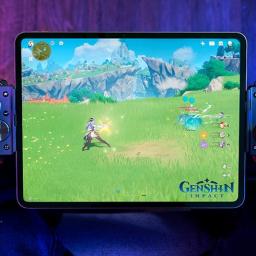 |
by Matt Tate on (#6XYKA)
Razer has announced its latest lineup of Kishi mobile gaming controllers, capable of housing your phone, small tablet and, in the most comically extreme case, a full-size iPad.The Kishi V3 Pro XL is seemingly designed for people who like to play games on the largest possible mobile canvas, but don't want to rely on touch controls or just pair a wireless pad. The two sides of the controller stretch out so wide that the V3 Pro XL is able to accommodate a 13-inch iPad Air or Pro, or compatible Android slate of similar proportions, morphing the tablet into a handheld console that makes the Switch 2 look decidedly miniature in comparison.Take away the "XL" bit and the supersized controller offers the same functionality as the standard Kishi V3 Pro, which is built for USB-C phones and tablets up to 8 inches. Both controllers feature precise anti-drift TMR thumbsticks with swappable caps, dual mouse click-back buttons and claw grip bumpers, as well as Razer's Sensa HD haptics (not currently supported on iOS). Wired and remote play is possible on PC via the Razer Nexus launcher, and you get USB-C passthrough charging built in. There's a 3.5mm headphone jack too if you prefer wired audio.RazerRounding out the refreshed lineup is the Kishi V3, which is designed for iPhone and Android handsets. Many of the Pro features trickle down to the streamlined option, including the full-size TMR sticks (without the swappable caps) and back buttons. The USB-C island" design of the controller makes it widely compatible with cases, so you don't need to yank yours off every time you want to play a game.Whatever model you pick up, Razer will give you up to six free months of Apple Arcade, normally priced at $7 per month. Will that soften the blow of the prices for these controllers? Not really. The Kishi V3 costs $100, the V3 Pro is $150, and the V3 Pro XL comes in at a whopping $200, which seems extremely high for a controller add-on for your massive tablet. But if you've been looking for a controller for that very specific use case, Razer has you covered.This article originally appeared on Engadget at https://www.engadget.com/gaming/razers-new-kishi-v3-controllers-can-fit-up-to-a-13-inch-ipad-170317228.html?src=rss
|
 |
by Kris Holt on (#6XYG3)
A remake of the original Silent Hill is in development, it was revealed during Konami's Press Start stream on Thursday. An image announcing that another Silent Hill game from developer Bloober Team was in the works appeared during the stream. It was accompanied by music from the first game in the series. The official Japanese Silent Hill account on X later clarified that Bloober is modernizing the original 1999 entry.Back in February, it emerged that Bloober is making a new title based on Konami's intellectual property. The two companies previously worked on a remake of Silent Hill 2, which was released in October and, by January, had sold more than 2 million copies. It was also one of our favorite games of 2024.
|
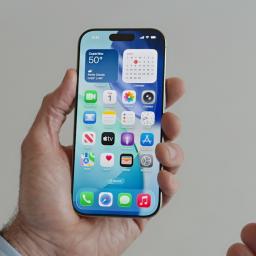 |
by Valentina Palladino on (#6XVX2)
Apple's WWDC 2025 keynote gave fans a good look into what their iPhones, iPads and Mac computers will look like come this fall when the new software updates come out. Key to the changes is Apple's new Liquid Glass design language, which will bring UI tweaks to all of its operating systems later this year. The redesign focuses on streamlining things and boosting productivity while giving most elements a semi-translucent look. As to be expected Apple Intelligence features are baked into all of the forthcoming software updates, and users can expect to see updated widgets, a few overhauled apps and more. Here's everything Apple announced at WWDC 2025 this year.Liquid Glass design and new software namesAppleAs was expected, Apple revealed a new visual design language coming to all of its operating systems dubbed Liquid Glass. It called this new system its "broadest" design update yet, and it features semi-translucent features like redesigned widgets, notifications and more. Apple is billing it as more dynamic than the previous design language, and a way to bring even more consistency across all operating systems including iOS, iPadOS and macOS.In addition to the redesign, Apple is revamping the names of all of its operating systems. Instead of iOS 19, for example, we'll have iOS 26 coming out this fall. iPadOS 26, watchOS 26 and others will follow suit, marking the first time Apple has given its software updates year identifiers instead of arbitrary generation numbers.iOS 26AppleThe changes coming to iOS 26 are subtle, but they give it a clean look and feel, with lots of overlapping elements, rounded corners and more. Apple said the design is inspired by visionOS, the operating system that powers Vision Pro headsets. App icons have a slightly different look, while toolbars and text inputs have see-through appearances. Folks will be happy to know that things are largely the same - you shouldn't have an issue identifying key apps like the Phone, Messages or FaceTime.Phone appSpeaking of the Phone app, it's getting the biggest redesign since its launch with the original iPhone all those years ago. It puts scrolling front and center, allowing you to scroll through key contacts, recent calls and voicemail messages all on one screen. A translucent bar at the bottom of the screen gives you quick access to additional contacts and the keypad. Hold Assist, a new feature, will mute hold music but keep you on a call until someone picks up on the other line.AppleMessagesMessages is getting a few new features as well, including the ability to change the entire message background color for group messages and polls among group chat members. New screening features includes "unknown senders," which sequesters those pesky spam messages to a separate space in Messages, so you can keep your most important conversations in the forefront and ignore those that don't matter.Apple Intelligence features are spread throughout all of the software updates, and in Messages, there are some related to Genmoji. In iOS 26, you'll be able to combine two existing emoji to create an entirely new, custom Genmoji, and you can even use ChatGPT to create Genmoji as well.Live translate is coming to Messages, too, automatically translating messages as you type and delivering them to the receiver in their preferred language. Similarly functioning live captions will be available in FaceTime, and Apple Music will get live translation and live pronunciation features to help listeners enjoy music in other languages. The Call Translation API will be available to third-party developers to use in their communication apps as well.Maps and WalletApple Maps will gain the ability to learn your routine and suggest alternative routes based on traffic. It will also log your "visited places": cities, landmarks and business that you've been to, making it easier for you to find places you want to revisit again.Separately, the Wallet app will support Digital ID, which lets you create a digital ID that's different from your driver's license and passport and can be used to verify your identity in some locations. You'll also be able to add updated boarding passes to Wallet when you're flying.Games appiOS 26 will feature a dedicated Games app as well. It will feature a Library tab, where you can find all of the games you've ever downloaded for iOS, and a dedicated Apple Arcade tab for all of the titles included in that service. Challenges is a new feature will let you compete against friends in supported games, including supported single-player games that developers.Visual IntelligenceVisual Intelligence is getting baked into iOS 26's interface a bit more, allowing you to visually search for anything that pops up on your iPhone screen. For example, if there's an image of a jacket you like on your social media feed, you can take a screenshot and use the new Visual Intelligence image search feature to search for similar jackets across the web and other apps. You can highlight certain areas of your screenshot to refine the search further.watchOS 26AppleIn addition to the Liquid-Glass visual overhaul, watchOS 26 will bring Workout Buddy to your wrist. The new feature will analyze your fitness history and identify insights in real time as you're working out. It takes shape as a sort of audio coach that can inform you of things like the distance you've run, average pacing and those compares to previous runs you've completed. New Apple Music integration can choose playlists for you as well, based on the type of workout you're doing.Smart Stack on Apple Watch is getting an update as well, prioritizing the information that matters most to you depending on your routine. For example, when you walk into your gym, a Smart Stack hint will appear on your watch that will quickly take you to the workout app so you can dive right into your training session.macOS TahoeAppleThe next version of Apple's desktop operating system is dubbed macOS Tahoe, keeping the classic California naming scheme the company has been using for a long time. Liquid Glass design language is at the forefront here, but long-time Mac users will find most things look quite familiar, just with a semi-translucent, rounded edge now. Users will have the option to make custom backgrounds, change the color of their desktop folders and even add emoji to them.iOS' Phone app will be available on macOS Tahoe, improving the calling capabilities of Mac computers. With it, you can more easily access your contacts and voicemail messages, and it will support all of the new features the new Phone app in iOS 26 will, including things like Hold Assist.Intelligent actions are coming to the Shortcuts app, which integrates Apple Intelligence into the existing Shortcuts program. This lets you access Apple Intelligence models on-device, creating your own Shortcuts with AI capabilities. In a similar vein, Spotlight will be more powerful in macOS Tahoe, allowing you to call upon and execute multi-step Shortcuts and actions directly from Spotlight search, without navigating to other apps. You can also use Spotlight to access your clipboard history in the latest software update, too.iPadOS 26iPadOS 26 will feature a Liquid Glass redesign along with most of the new features detailed for iOS 26, including the revamped Phone and Games apps. Unique for the iPad, though, is a new menu bar and windowing feature that makes the tablet's UI look and feel a lot more like macOS. That means it should improve multitasking, something iPad power-users have wanted for a long time. You can resize windows, snap them to different corners or swipe them away temporarily to get a glimpse of your home screen. Apple claims the window system is designed to work just as well with touch input (either via fingers or a stylus) or trackpads on compatible accessories.The Files app on iPad will feature an updated list view and the same custom color options you'll find on the new macOS Tahoe. You'll also be able to choose which programs or apps you want to open certain files, so for example, you can opt to open an image in Photoshop rather than the default option. Speaking of, a new Preview app is coming to iPads in the new software update. A mainstay on macOS, this app will bring native PDF management, annotation and editing to Apple's tablets.iPadOS 26 will bring a number of new features for podcasters and the like, including the ability to record "studio quality" vocals with AirPods. Users will also be able to press and hold their AirPods to start and stop the recordings they're making on their iPads. In addition, a new local capture feature will integrate with video conferencing apps to let users record their video on iPads for things like remote group podcasts.visionOS 26AppleThe next software update coming to Vision Pro systems will include new Apple Intelligence features, spatial experiences and more. Spatial widgets are coming to visionOS 26, allowing you to put, say, a calendar widget somewhere in your Vision Pro field of view and it will stay in that place even as you move around. Native and third-party apps can support spatial widgets, and they'll all be available in the new Widgets visionOS app.Spatial scenes is a new feature that uses AI to bring your photos to life in front of your eyes while using Vision Pro. Spatial scenes also extend to photos you'll see while browsing, so for example, those travel photos you see while researching your next vacation will look even more lifelike using spatial scenes.Arguably the most exciting visionOS news is that it will allow the Vision Pro headset to be used with PlayStation VR2 Sense controllers. This will make Vision Pro more of a contender in the gaming space, since lack of compatible controllers was a big factor holding it back. In addition, the new software update will bring eye-scrolling to the Vision Pro, which will allow users to scroll documents, apps, webpages and more just by using their eyes.tvOS 26AppleThe new Liquid Glass design language brings more cinematic film and TV art to the Apple TV app in tvOS 26. A new Profiles feature in Apple TV+ lets you customize your viewing experience with your own tastes, and each member of your household can have their own profile. Elsewhere, Apple Music on Apple TV is getting a karaoke-esque feature that lets you sing along to your favorite songs using your iPhone as the microphone.This article originally appeared on Engadget at https://www.engadget.com/big-tech/wwdc-2025-ios-26-new-liquid-glass-design-and-everything-else-apple-announced-171718769.html?src=rss
|
 |
by Igor Bonifacic on (#6XYG4)
Microsoft has begun rolling out a major update for Copilot. Starting today, Windows 10 and 11 users in the US can try out the assistant's Vision feature. The tool allows you to share up to two apps with Copilot, so that you can then chat about what it sees. "[Copilot Vision] acts as your second set of eyes, able to analyze content, help when you're lost, provide insights, and answer your questions as you go," Microsoft says.Additionally, with its new Highlights functionality, Copilot can even show you how to complete a specific task within an app. To try out Copilot Vision, open the Copilot app on your computer, click the glasses icon in the composer window and then select the browser or apps you want to share. You can stop sharing at any time by pressing "Stop" or "X" within the prompt dialogue. Microsoft says Windows users in non-European countries can look forward to the feature rolling out to their computers soon.Microsoft began testing Copilot Vision with Copilot Pro subscribers in October. Following the contentious launch of Copilot's Recall feature, the company took a more careful approach with Vision by making it something testers had to manually activate and limited to a select list of websites. Now the company is expanding the available functionality before rolling it out to other markets.This article originally appeared on Engadget at https://www.engadget.com/ai/microsofts-copilot-vision-ai-helper-is-now-available-on-windows-in-the-us-160034369.html?src=rss
|
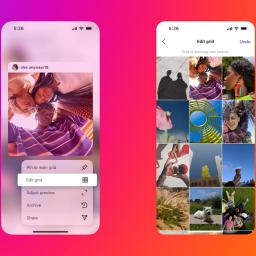 |
by Mariella Moon on (#6XYG5)
You don't have to make a huge effort planning Instagram posts anymore so that your profile takes on a certain aesthetic or so that your grid reads or looks a certain way. Instagram will soon (and finally) let you re-order the posts already on your grid. Alessandro Paluzzi, who reverse engineered apps and posted upcoming features online, found an "edit grid" option within Instagram way back in 2022. Instagram didn't say when exactly the feature will be available, but when you do get the edit grid option, tapping it will take you to a screen where you can rearrange your posts in the way you want them to appear on your profile.In the post announcement from Instagram head Adam Mosseri, he also revealed that Instagram is "exploring a way" that will allow you to post to your account without broadcasting it to your followers' feeds. The idea is to make posting less intimidating and to allow you to keep your account active without the pressure. Mosseri also didn't say when the feature is rolling out, but take note that his post is about Instagram's investments in creativity for this year.Finally, the Instagram head announced that trial Reels are now available to everyone. Trial Reels will allow you to publish Reels that bypass your followers' feeds. Those Reels are then recommended to non-followers instead, since the feature's original purpose was to give creators a way to experiment with new types of content that could alienate their current audience. Mosseri said that the hope is for trial Reels to "give everyone greater freedom to explore their creativity in a low-pressure way."This article originally appeared on Engadget at https://www.engadget.com/apps/instagram-will-soon-let-you-re-arrange-your-grid-160011925.html?src=rss
|
 |
by Daniel Cooper on (#602YP)
The big day is approaching and there's plenty of pressure for you to hand over a gift that says a lot all at once. It may be called Father's Day, but this is an event for you to say a loving thank you to whatever person held that special role in your life, irrespective of gender. Here's a list of the best gifts you can give to show your appreciation for all of the parenting they did, and may even still do. This article originally appeared on Engadget at https://www.engadget.com/the-best-fathers-day-gifts-you-can-still-shop-last-minute-131504593.html?src=rss
|
 |
by Kris Holt on (#6XYDF)
Just in time for a last-minute Father's Day gift (or perhaps a little treat for yourself, because you deserve nice things), Apple's AirPods 4 have dropped back down to their lowest price to date. You can snap up a pair for $99. That's $30 off the list price. This discount is for the base version of the earbuds without active noise cancellation (ANC). All the same, this is a good deal on our pick for the best budget AirPods, especially if foregoing ANC doesn't bother you too much. We gave the AirPods 4 a score of 88 in our review. The improved fit and comfort, and upgraded sound quality compared with the previous version are definite plus points. The AirPods 4 include features seen in the higher end AirPods Pro 2 but, unfortunately, not that model's onboard volume controls. The lack of wireless charging and Apple's Conversation Awareness feature are also negatives. However, due in large part to the H2 chip that's included in the AirPods 4 (the same one that powers AirPods Pro 2), you'll get features such as Personalized Spatial Audio with dynamic head tracking, "cinema-quality" audio for FaceTime, Adaptive EQ and Voice Isolation (which helps eliminate background noise). With Siri Interactions, you can nod or shake your head to accept or reject calls, and respond to or dismiss messages and notifications. When Apple rolls out iOS 26, iPadOS 26 and macOS Tahoe 26 this fall, the company will release a firmware update for AirPods 4 (as well as AirPods 4 with ANC and the second-gen AirPods Pro). This update will bring new features to the earbuds, such as the ability to use them to control iPhone and iPad cameras. Apple is also promising "studio quality recording" that should help creators better capture sound, even in noisy environments. Audio quality upgrades are on the way too. Check out our coverage of the best Apple deals for more discounts, and follow @EngadgetDeals on X for the latest tech deals and buying advice.This article originally appeared on Engadget at https://www.engadget.com/deals/apples-airpods-4-earbuds-are-cheaper-than-ever-right-now-144223181.html?src=rss
|
 |
by Matt Tate on (#6XYDG)
If you're looking for a versatile new wireless controller that isn't exclusive to a particular platform, 8BitDo's various pads are always worth considering. And Amazon's current deal on the brand's Ultimate 2C Wireless Controller is nearly the cheapest we've seen. Right now, if you pick up the controller in either its Purple or Green colorways, you'll pay $25.49, as opposed to $30 or above (the special edition Black Wukong version costs $35) for the other available colors. The lowest price we've ever seen this model at is $25. If you're a console gamer you'll need to look elsewhere, but the Ultimate 2C plays nice with Android devices and Windows PCs, connecting either via Bluetooth in the case of the former, or over 2.4G or a wired connection for PC. There's also a mode switch button to make it easy to hop between devices. The controller offers extra bumpers that sit next to the standard left and right bumpers, and these can be remapped without the need for additional software, while the Hall Effect joysticks are precise and reassuringly durable. The Ultimate 2C is compatible with devices running Windows 10 and above, and Android 9.0 or above. You can expect 32 hours of playtime over a Bluetooth connection, or 19 hours when using the wireless 2.4G adapter. Follow @EngadgetDeals on X for the latest tech deals and buying advice.This article originally appeared on Engadget at https://www.engadget.com/gaming/8bitdos-ultimate-2c-controller-drops-to-25-144020474.html?src=rss
|
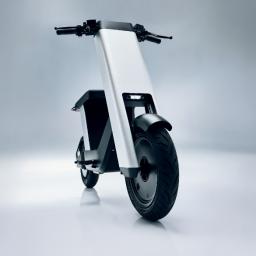 |
by Lawrence Bonk on (#6XYDH)
Infinite Machine made waves with its retro-futuristic P1 electric bike. That one was built for speed, but the company is back with something that's more for urbanites commuting to and from work. The Olto boasts 40 miles of range and a top speed of 33 MPH, with a 20 MPH limit while riding in the bike lane.Just like the P1, the Olto e-bike looks both futuristic and retro, with a design that can only be described as "Cybertruck meets a scooter from Tron." This bike could be a boon for commuters, as it can accommodate two riders at the same time. The design is also fairly modular, so riders can add accessories like child carriers, rear racks and baskets, among other items.The battery is easily removed with one hand, for nighttime charging, and can reach 50 percent in just an hour at the outlet. This removable battery also helps with security, as the battery is typically one of the most expensive components of an e-bike.Infinite Machine However, that's not the only security feature that Infinite Machine has implemented here. The company claims the Olto "virtually theft-proof." Each bike is connected to the internet and tracked in real time with precise GPS coordinates. There's an app to keep an eye on things and the vehicle features a dedicated slot for AirTags.Once parked, the bike automatically locks the steering and wheels, making it difficult to move. If someone tampers with the vehicle, an alarm will sound and an alert gets sent to the owner's phone. The phone also doubles as the key.Now for some bad news. All of these high-tech features come with a high-end price tag. The Olto costs $3,495. Preorders are available right now, with shipments going out later in the year.This article originally appeared on Engadget at https://www.engadget.com/transportation/the-olto-is-a-future-forward-e-bike-that-can-accommodate-two-passengers-140044468.html?src=rss
|
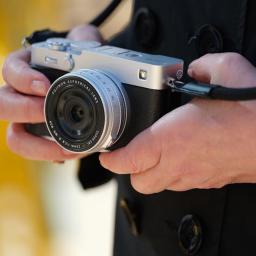 |
by Igor Bonifacic on (#6XYDJ)
If you have ever looked at the X100VI said to yourself, "Man, I wish Fujifilm would just make an interchangeable lens version of this camera," consider your request answered. Four years after the release of the X-E4, the company has announced the X-E5, a compact, $1,699.95 camera that should appeal to the same crowd that loves X100VI.Inside, the X-E5 has Fujifilm's latest X-Trans CMOS 5 HR sensor. That's the same sensor you'll find on the X100VI, X-T5 and X-T50. It's capable of capturing 40.2-megapixel stills, and video at up to 6.2K and 30 frames per second. Thanks to improvements Fujifilm has made to the sensor's pixel structure, the X-E5 offers a native 125 ISO, and there's AI-based autofocus to make it easier to capture moving subjects such as animals, birds, insects, motorcycles, planes and more.Also new to the X-E5 is the inclusion of in-body image stabilization (IBIS). It offers up to seven stops of stabilization near the center of the frame and six stops toward the periphery.Fujifilm has also once again tweaked the exterior of the camera. If the X-E4 was a bit too minimalistic for your taste, the good news is the X-E5 has a front grip where Fujifilm did away with that on the X-E4. The camera's top plate is machined from a single piece of aluminum, an addition that should make the X-E5 feel more premium than its predecessor. On the top, you'll find all the usual dials, including one for shutter speed and another for exposure compensation.FujifilmThere's also an entirely new dial dedicated to Fujifilm's film simulations. In addition to the usual presets like Classic Chrome and Velvia, you can save up to three of your own recipes for easy access. As before, the external LCD can flip up 180-degrees to make it easier to capture selfies and vlog.Fujifilm has also redesigned the X-E5's viewfinder. It offers two new modes. First, there's a "Classic" mode, which simplifies the interface so it's more like what you would find on an old film camera. All your exposure settings are displayed along the bottom of the screen in a deep red color, with the light meter present on the side. Alternatively, the other new mode, "Surround View," displays a black, semi-transparent or outlined area outside of the aspect ratio you've set. In practice, that should make it easier to frame your shots.Alongside the X-E5, Fujifilm announced a new pancake lens, the XF23mm f/2.8 R WR. It's a full stop slower than the fixed, 35mm equivalent you'll find on the X100VI, but it's about the same size and should be a lot faster to focus thanks to inclusion of a direct current motor.Fujifilm will offer the X-E5 in black and silver. The camera will be available starting in August. At $1,699.95 for just the camera body, the X-E5 is twice as expensive as its predecessor. In fact, it's more expensive than the $1,599 X100VI, which features a leaf shutter and hybrid optical viewfinder. Personally, I'm sad about that since the X-E4 was my recommendation for a great starter camera. Now I'll need to tell people to look elsewhere.This article originally appeared on Engadget at https://www.engadget.com/cameras/the-fujifilm-x-e5-is-basically-an-interchangeable-lens-x100vi-133931379.html?src=rss
|
 |
by Will Shanklin on (#6XYAD)
On Thursday, Bose unveiled its next-gen premium wireless earbuds. The latest QuietComfort Ultra Earbuds have enhanced adaptive noise cancellation, thanks to AI. Among their other upgrades over the originals are boosted call quality and wireless charging.Since AI is the tech world's obsession, it's no surprise that Bose is jumping on that bandwagon. Here, the company uses it to improve adaptive noise cancellation. AI algorithms in the new model can smooth out sudden spikes in background noise while using aware mode. (That's the feature that lets you hear your surroundings while listening to music.) So, for example, the ANC should respond more quickly to a suddenly passing train or siren. In theory, that means fewer distractions from your music.AI is also behind improved call quality in the second-gen QuietComfort Ultra Earbuds. Bose claims that its noise suppression system improves voice pickup and overall quality.BoseThe new model supports wireless charging natively. The first-gen QC Ultra Earbuds only offered it in a roundabout way. You had to buy a $50 silicone cover for the case, which wasn't the most elegant solution.The rest of the 2025 model's upgrades are subtler. Their ear tips now include a built-in earwax filter. That should make it easier to clean them and avoid sound degradation over time. You can also turn off the earbuds' capacitive touch controls in the app. The inability to do that was a common complaint about the 2023 originals. (They'll receive an update later this year that adds the same functionality.)The second-gen Bose QC Ultra Earbuds retail for the same $299 as their predecessors. They'll be available in black, white smoke and deep plum. Later this summer, the company will start pre-orders and provide a release date.SoundLink PlusBoseAlongside the earbuds, Bose announced two new Bluetooth speakers. The SoundLink Plus is a mid-range one, sitting between the SoundLink Flex and Max. The company's tagline for the speaker sums up the niche it wants to fill: "big enough to bring the bass but portable enough to take on the go."The SoundLink Plus has one subwoofer, a tweeter and four passive radiators. It also includes an automatic tuning system called Active EQ. Bose says it adjusts its frequency response to match an optimal sound curve. It weighs 3.29 lbs. It supports Bluetooth Core 5.4.The speaker supports up to 20 hours of playback. In a nice touch, you can use its USB-C port to charge your phone and other devices.The SoundLink Plus costs $269. If you're looking to grab one, you won't have to wait long. Pre-orders open today, ahead of a June 26 launch. It will be available in black, blue dusk and citrus yellow. (The latter won't be available to pre-order until June 18.)SoundLink Micro (second-gen)BoseFinally, Bose is rolling out a second-gen version of the SoundLink Micro. The speaker is still small - just slightly less so than the first model. (The second-gen Micro measures 4.06 x 4.06 x 1.54 inches.) But in exchange, you get much longer battery life. Bose says the new speaker lasts up to 12 hours, an increase from six hours in its predecessor.The SoundLink Micro also includes some modernizations. First, it now works with the Bose app. The speaker also ditches the micro-USB charging from its predecessor in favor of USB-C.Elsewhere, it adds the same Active EQ and Bluetooth Core 5.4 support in its mid-range sibling. The company claims that the speaker plays back sounds more clearly at higher frequencies. (And it does so without muddying bass.) It also has a removable nylon strap. This should be handy for attaching the speaker to bags, bikes, shower heads and the like.The Bose SoundLink Micro will be available in black and blue dusk. It costs $129. The company will provide specific launch info later this summer.This article originally appeared on Engadget at https://www.engadget.com/audio/headphones/boses-second-gen-quietcomfort-ultra-earbuds-have-ai-enhanced-adaptive-anc-130057912.html?src=rss
|
 |
by Mariella Moon on (#6XYAE)
The Solar Orbiter has been observing the sun since 2021, but it recently went on a side trip to Venus which significantly tilted its orbit and gave it a good view of the sun's polar region. That is how it was able to capture images that will historically be known as humankind's first-ever views of the sun's pole. All our galaxy's planets and the other spacecraft we've deployed orbit the sun around an imaginary ecliptic plane along the star's equator. But thanks to the Solar Orbiter's Venus flyby, it now has a view of the sun from below its equator, allowing it to see the star's southern pole clearly. The images you see above were captured from an angle of 15 degrees below the equator on March 16 and 17, but the probe has reached the 17 degree maximum angle it could achieve since then.Three of the probe's instruments were responsible for the images. The Polarimetric and Helioseismic Imager (PHI) imaged the sun in visible light and mapped its surface magnetic field. Meanwhile, the Extreme Ultraviolet Imager (EUI) imaged the sun in ultraviolet light, and the Spectral Imaging of the Coronal Environment (SPICE) instrument captured light "coming from different temperatures of charged gas above the sun's surface, thereby revealing different layers of the sun's atmosphere."So what exactly was the Solar Orbiter able to observe at the sun's southern pole? Well, the pole's magnetic field, simply put, is a mess at the moment. See, the sun's magnetic field flips roughly every 11 years, and it's about to flip this year if it hasn't yet. Normally, a magnet has a clear north and south pole, but the orbiter's PHI instrument showed that both north and south polarity magnetic fields are present at the sun's south pole right now. "This happens only for a short time during each solar cycle, at solar maximum, when the Sun's magnetic field flips and is at its most active," ESA explained.After the flip, the magnetic field fixes itself so that the poles have single polarities. The process is gradual, however, and it will take five to six years to achieve solar minimum, wherein which the sun's magnetic field is at its most orderly. These solar cycles or regular magnetic field flips aren't fully understood yet, and the orbiter's observations could be the key to unlocking that knowledge.In addition, scientists used the orbiter's SPICE instrument to take Doppler measurements, or how fast clumps of solar material are moving. They then took that information to create a velocity map that shows how solar material moves within a specific layer of the sun. These measurements can show how the sun flings out particles into space in the form of solar winds, which is one of the orbiter's key goals.This article originally appeared on Engadget at https://www.engadget.com/science/space/solar-orbiter-captures-images-of-the-suns-pole-for-the-first-time-123047746.html?src=rss
|
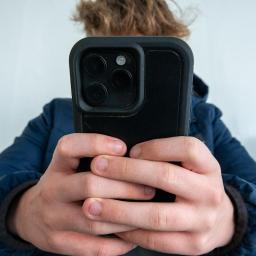 |
by Steve Dent on (#6XYAF)
As part of new updates to its parental controls announced at WWDC 25, Apple has introduced a new feature that requires kids to get permission to text new numbers. That's among other new child safety settings including more granular age-based app ratings that will be introduced to the new iOS 26, iPadOS 26, macOS Tahoe 26, watchOS 26, visionOS 26, and tvOS 26 operating systems coming this fall, Apple announced.The new feature called Communication Limits (part of Child Accounts) gives parents the ability to manage their kids communications across Messages, FaceTime, calling and iCloud contacts. Children must send a request to their parents when they want to contact a new phone number and parents can then give approval with a single tape in Messages. Developers can include the new function in third-party apps using Apple's PermissionKit framework.AppleAnother new child-friendly feature is more granular age-based ratings for apps to help parents decide which are safe for their kids to use. By the end of 2025, those will expand to five categories including three for adolescents: 13+, 16+ and 18+. When parents set app content restrictions, apps that exceed those will not appear on the App Store - though kids can request exemptions if the Ask to Buy setting is enabled.Apple already employs safety features like web content filters and app restrictions for kids under 13, but it will now enforce "similar age-appropriate" protections for teens between 13 and 17. The company will also let parents give apps a child's age range without disclosing their exact date of birth. Finally, the Communication Safety tool has been expanded to intervene when it detects nudity in FaceTime video calls and it will blur out nudity in Shared Albums in Photos.Apple's changes follow in the heels of new age-verification laws enacted in Texas, Utah and and other states. Google, for one, opposed the Utah bill, but Meta and other app makers have called for legislation that would require app stores to get parental approval before their teens download any app - effectively offloading the responsibility to Apple, Google and others.This article originally appeared on Engadget at https://www.engadget.com/apps/apples-ios-26-requires-kids-to-get-parental-permission-to-text-new-numbers-120049197.html?src=rss
|
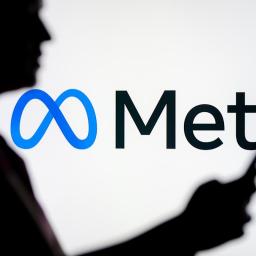 |
by Karissa Bell on (#6XY67)
Meta is finally cracking down on "nudify" apps that use AI to generate nonconsensual nude and explicit images of celebrities, influencers and others. The company is suing one app maker that's frequently advertised such apps on Facebook and Instagram, and taking new steps to prevent ads for similar services.The crackdown comes months after several researchers and journalists have raised the alarm about such apps. A recent report from CBS News identified at least "hundreds" of ads on Meta's platform promoting apps that allow users to "remove clothing" from images of celebrities and others. One app in particular, called Crush AI, has apparently been a prolific advertiser on Facebook and Instagram. Researcher Alexios Mantzarlis, Director of Cornell Tech's Security, Trust and Safety Initiative, reported back in January that Crush AI had run more than 8,000 ads on Facebook and Instagram since last fall.Now, Meta says it has filed a lawsuit against Joy Timeline HK Limited, the Hong Kong-based company behind Crush AI and other nudify apps. "This follows multiple attempts by Joy Timeline HK Limited to circumvent Meta's ad review process and continue placing these ads, after they were repeatedly removed for breaking our rules," the company wrote in a blog post. Joy Timeline HK Limited didn't immediately respond to a request for comment.Meta also says it's taking new steps to prevent apps like these from advertising on its platform. "We've developed new technology specifically designed to identify these types of ads - even when the ads themselves don't include nudity - and use matching technology to help us find and remove copycat ads more quickly," Meta wrote. "We've worked with external experts and our own specialist teams to expand the list of safety-related terms, phrases and emojis that our systems are trained to detect within these ads." The social network says it also plans to work with other tech platforms, including app store owners, to share relevant details about entities that abuse its platform.Nudify apps aren't the only entities that have exploited Meta's advertising platform to run ads featuring celebrity deepfakes. Meta has also struggled to contain shady advertisers that use AI-manipulated video of public figures to promote scams. The company's independent Oversight Board, which weighs in on content moderation issues affecting Facebook and Instagram, recently criticized Meta for under-enforcing its rules prohibiting such ads.This article originally appeared on Engadget at https://www.engadget.com/social-media/meta-is-cracking-down-on-ai-nudify-apps-100034964.html?src=rss
|
 |
by Steve Dent on (#6XY68)
In case all the content from Summer Game Fest wasn't enough, Konami has you covered. Today at 9AM ET the developer will stream Konami Press Start, a new showcase featuring updates (and hopefully new gameplay) for Metal Gear Solid Delta: Snake Eater and Silent Hill f, among other titles.It will stream on Konami's YouTube channel and is expected to run 37 minutes. On top of news about the aforementioned two games, Konami has promised more - perhaps news around the Gradius Origins collection coming in August, possible new DLC for the Silent Hill 2 remake from Bloober Team or an update on Metal Gear Solid: Master Collection vol. 2.As a reminder, Metal Gear Solid Delta: Snake Eater is set to arrive on PS5, PC and Xbox Series X on August 28th, while Silent Hill f will come to those same platforms on September 25th. The company has also been working on Silent Hill Townfall and other titles.This article originally appeared on Engadget at https://www.engadget.com/gaming/watch-konamis-press-start-metal-gear-and-silent-hill-stream-at-9am-et-100011285.html?src=rss
|
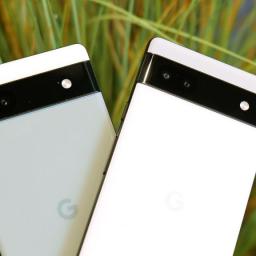 |
by Anna Washenko on (#6XXXG)
Google's Pixel 6a has been a winner in many respects, but a new issue with the smartphone's battery may pose a safety concern. After Android Authority reported on a pair of instances where a Pixel 6a battery overheated to the point where the device caught fire, the publication spotted some details in the latest Android 16 beta indicating that as a precaution, the Pixel 6a battery capacity and charging speed will be reduced. In addition, Android Authority received this statement from Google:
|
 |
by Will Shanklin on (#6XXVK)
Remedy's multiplayer spin on Control is coming to the PlayStation Game Catalog. Sony's June PS Plus additions start with the day-one arrival of FBC: Firebreak. Other entries this month include the latest Battlefield entry and sticky-ball Katamari fun.FBC: Firebreak lets you and up to two others team up to kick some Hiss ass. Play as a government employee who volunteered to take out extra-dimensional monsters. But the wicked delights really kick in when you enhance your plain ol' guns with supernatural gear.In our preview, Engadget's Jessica Conditt saw a promising and "incredibly fun" shooter that only needed a bit of fine-tuning before launch. "Firebreak is poised to be a thoughtful and focused entry in the co-op shooter genre, and it's already an inviting extension of Remedy's darkest and silliest sensibilities," she wrote.FBC: Firebreak will be available in the Game Catalog on its launch day, June 17. You'll need a PS Plus Extra or Premium membership to claim it.EAAlso coming on that date is Battlefield 2042. This could be a good time to catch up on the franchise before its next installment. (It's expected by April 2026.) Also arriving this month is We Love Katamari Reroll + Royal Reverie. Who doesn't love rolling a satisfyingly growing blob of random shit?Both of those titles require a PS Plus Extra or Premium membership. Ditto for other June entries like Five Nights at Freddy's: Help Wanted 2 and theHunter: Call of the Wild. Meanwhile, the 2000 classic Deus Ex: The Conspiracy will only be available for Premium subscribers. You can check out the PlayStation blog for the complete list.This article originally appeared on Engadget at https://www.engadget.com/fbc-firebreak-headlines-junes-ps-plus-additions-211440207.html?src=rss
|
 |
by Ian Carlos Campbell on (#6XXVM)
If it feels like you spend a lot more time watching ads in Prime Video than you used to, that may not be a mistake. Amazon has increased the number of ads or "ad load" in Prime Video to four-to-six minutes of ads per hour, Adweek reports. Amazon's plan to increase the amount of advertising in its streaming service was previously reported in October 2024.Shifting to a max of six minutes of ads per hour is nearly double the up to three-and-a-half minutes of ads that could play when Amazon first converted its basic Prime Video subscription to an ad-supported tier. The company used to offer all of Prime Video's features and an ad-free experience for the cost of Amazon Prime ($159 per year / $15 per month) or $9 per month, but announced at the end of 2023 that avoiding ads would cost an extra $3 every month. Besides inserting ads, Amazon's basic plan also doesn't support for features like Dolby Atmos and Dolby Vision.Engadget has reached out to Amazon to confirm the ad load changes and will update this article if we hear back.Regardless of your tolerance for ads, cheaper ad-supported subscriptions have quickly become expected from most streaming services. Netflix, Max, Peacock and Paramount+ all offer subscriptions with ads. Even Apple, who could theoretically afford to lose money on subscriptions, reportedly started building a team to sell ads for a possible ad-supported tier of Apple TV+ in 2023.While adding more interruptions to the Prime Video experience isn't what anyone wants, Adweek does note that streaming services still insert far fewer ad breaks than broadcast TV. The ad load on traditional television "typically ranges from 13 to 16 minutes per hour."This article originally appeared on Engadget at https://www.engadget.com/entertainment/streaming/prime-video-reportedly-shows-almost-twice-as-many-ads-as-it-used-to-210650918.html?src=rss
|
 |
by Anna Washenko on (#6XXVN)
SAG-AFTRA has suspended its strike against ten game studios. The organization's national board will meet tomorrow to consider a tentative agreement with the developers; more details of the arrangement will be disclosed if and when the board agrees to the terms.Variety obtained a statement from a spokesperson for the gaming companies that offered some hints about the contents of the potential deal: "This agreement builds on three decades of successful partnership between the interactive entertainment industry and the union. It delivers historic wage increases of over 24 percent for performers, enhanced health and safety protections, and industry-leading AI provisions requiring transparency, consent and compensation for the use of digital replicas in games."It's been almost a year since the performers' union called a strike against the companies participating in the Interactive Media Agreement. The move was part of an effort to secure protections for its members regarding AI-generated likenesses of their voices and bodies in the gaming industry. The studios signatory to the IMA are:
|
 |
by Jessica Conditt on (#6XXVP)
Mouse: PI for Hire is a lot deeper than I initially assumed. When the game first caught buzz in May 2023 with an early teaser populated by placeholder assets, I didn't understand the hype. The art style was definitely cool - Mouse is a black-and-white first-person shooter inspired by 1930s rubber hose cartoons, featuring bipedal rodents dressed like mobsters - but without any information about the gameplay loop, mechanics or narrative direction, I remained unmoved.After seeing Mouse in action at Summer Game Fest 2025, consider me movin'. Mouse is mechanically nuanced and fully voice-acted, starring Troy Baker as the protagonist, and it has more to offer than shock-value cartoon violence. This is a clue-gathering, photo-snapping, girlfriend-avenging, noir detective simulator that happens to star a bunch of slick-talking mice and rats, and I'm fully into it.In a private session at SGF, Fumi Games CEO Mateusz Michalak and lead producer Maciek Krzemien played through the game's third level, Gumshoe in the Opera, and discussed their intentions with the game. Krzemien said the team didn't want to simply lean on the art style at the expense of gameplay, and they focused on building a rich world with layered mechanics. Since that initial teaser came out, they've been fleshing out characters, drawing assets by hand, implementing puzzles and secrets, and tweaking individual weapons so that they feel just right.In Gumshoe in the Opera, the protagonist Jack Pepper is investigating his girlfriend's murder and he's backstage at the theater, looking for a friend who might be involved. Baker makes for a fine 1930s private eye, with a deep voice and a Boardwalk Empire twang. The supporting characters are voiced, too, and they tend to have a higher-pitched, henchman style of gangster speak. Mousey, you could say.Pepper fills up a 16-slot weapon wheel as he finds new guns and tools, including a flashlight, dynamite, Tommy gun, hookshot, pistol, shotgun and a turpentine blaster. The turpentine gun is ridiculous in the best way - since the characters in this world are cartoons, it melts their skin away like it's paint and then dissolves their skeletons. Killing enemies with a traditional gun leaves them lying in pools of black blood, sometimes with missing heads, and the game's environments have destructible elements. The mix of mature violence and classic cartoon art is strangely joyful, and it seems Fumi got the balance just right.PlaySideMost enemies in Mouse take a few hits before going down, but headshots are a thing and a well-aimed blast can definitely flatten a mobster (mouse-ster?) in one blow. I didn't get a chance to play the game myself, but now that I'm fully seated on the Mouse hype train, I'm curious to feel the gunplay firsthand. I have a sense it's going to be more difficult than Krzemien made it seem.The preview was roughly half shooting action, half investigation and exploring. When he's not in a firefight, Pepper climbs through vents and sneaks around backstage, collecting corked health pots, a coffee cup and weapons along the way. The coffee cup turns Pepper's hand into a finger gun, which he uses to rapidly pew pew pew his way through enemies. He learns how to double-jump and is able to backtrack through the level with this new ability, picking up additional supplies and a hidden trading card - for the card-based minigame, of course. A lockpick mechanic has players snake their way past spikes to complete a small maze inside the lock. In one moment, Pepper takes a photo of someone through a small window and it's stored for later, hinting at a larger clue-organizing mechanic. Krzemien said that after this section, Pepper will return to his office to piece together the evidence.There are a lot of layers to Mouse: PI for Hire. Maybe it's my fault for being surprised by the depth in this game or the care being shown by developers at Fumi, but at least now, I finally get it. Mouse is due to hit Steam, PlayStation 4, PS5, Xbox Series X/S and Switch this year, published by PlaySide.This article originally appeared on Engadget at https://www.engadget.com/gaming/theres-more-to-mouse-pi-for-hire-than-cartoon-violence-203044404.html?src=rss
|
 |
by Anna Washenko on (#6XXVQ)
Snapchat has added a new layer to its paid offerings. The Lens+ subscription combines the existing Snapchat+ monthly plan with more access to "hundreds of Lenses and AR experiences that let you play, create, and share Snaps with friends in whole new ways." The plan will cost $9 a month.At the start, the subscription will feature Lenses made by the company or by select creators. New augmented reality experiences will be added each week. Creators will be granted the option to build and monetize Lenses for the program in the coming months, although Snapchat hasn't publicly explained how it will select the "select" participants. A representative from the business confirmed to TechCrunch that the launch of Lens+ will not see any Lenses that were previously free placed behind a paywall.The social media platform introduced the Snapchat+ paid option in 2022. According to the blog post announcing this extra option, the program has 15 million subscribers. The Lens program has been taking advantage of developments in AI. Already this year, the company debuted generative AI video Lenses for Premium subscribers and released a standalone app for any user to create their own effects. Snapchat's other AR project is Specs, a set of glasses that it expects to release next year.This article originally appeared on Engadget at https://www.engadget.com/social-media/snapchat-adds-a-new-subscription-tier-for-lenses-201018127.html?src=rss
|
 |
by Will Shanklin on (#6XXSF)
Wikipedia is backing off AI article summaries... for now. Earlier this month, the platform trialed the feature in its mobile app. To say they weren't well-received by editors would be an understatement. The Wikimedia Foundation (WMF) paused the test a day later.The AI summaries appeared at the top of articles for 10 percent of mobile users. Readers had to opt in to see them. The AI-generated summaries only appeared "on a set of articles" for the two-week trial period.Editor comments in the WMF's announcement (via 404 Media) ranged from "Yuck" to "Grinning with horror." One editor wrote, "Just because Google has rolled out its AI summaries doesn't mean we need to one-up them. I sincerely beg you not to test this, on mobile or anywhere else. This would do immediate and irreversible harm to our readers and to our reputation as a decently trustworthy and serious source.""Wikipedia has in some ways become a byword for sober boringness, which is excellent," the editor continued. "Let's not insult our readers' intelligence and join the stampede to roll out flashy AI summaries."Wikimedia FoundationEditors' gripes weren't limited to the idea. They also criticized the nonprofit for excluding them from the planning phase. "You also say this has been 'discussed,' which is thoroughly laughable as the 'discussion' you link to has exactly one participant, the original poster, who is another WMF employee," an editor wrote.In a statement to 404 Media, a WMF spokesperson said the backlash influenced its decision. "It is common to receive a variety of feedback from volunteers, and we incorporate it in our decisions, and sometimes change course," the spokesperson stated. "We welcome such thoughtful feedback - this is what continues to make Wikipedia a truly collaborative platform of human knowledge."In the "discussion" page, the organization explained that it wanted to cater to its audience's needs. "Many readers need some simplified text in addition to the main content," a WMF employee wrote. "In previous research, we heard that readers wanted to have an option to get a quick overview of a topic prior to jumping into reading the full article."The WMF employee stated that the average reading level for adult native English speakers is that of a 14- or 15-year-old. "It may be lower for non-native English speakers who regularly read English Wikipedia," they added.The organization didn't rule out future uses of AI. But they said editors won't be left in the dark next time. "Bringing generative AI into the Wikipedia reading experience is a serious set of decisions, with important implications, and we intend to treat it as such," the spokesperson told 404 Media. "We do not have any plans for bringing a summary feature to the wikis without editor involvement."This article originally appeared on Engadget at https://www.engadget.com/ai/wikipedia-pauses-ai-summaries-after-editors-skewer-the-idea-200029490.html?src=rss
|
 |
by Ian Carlos Campbell on (#6XXSG)
NASA is shutting down several social media accounts run by the Science Mission Directorate, including the official Mars Curiosity Rover account on X. The organization says it made the decision in order to "make its work more accessible to the public, avoiding the potential for oversaturation or confusion."The "social media consolidation project" is concentrated in part on X, where there are dozens NASA accounts affiliated with specific missions and areas of research. So far 29 accounts are being archived or consolidated with other accounts, including @MarsCuriosity and @NASAPersevere, the two accounts for the organization's Mars rovers. Posts about both missions will now come from the more general @NASAMars. Some social media accounts will also "rebranded to better align with the new strategic framework," NASA says, "reflecting a broader scope or a more direct connection to core NASA initiatives."With "over 400 individual accounts across 15 platforms" it's not exactly unreasonable that NASA is trying to streamline things, but there is some much appreciated specificity lost when news and information is coming from a more general account. NASA's Curiosity is beloved and the agency's research into Mars was likely more well-known because the social media account made identifying with the rover easier.Beyond social media accounts, NASA could be heading into next year with far fewer resources in general. The Trump administration's proposed 2026 budget includes around a $6 billion cut to NASA's funding. The limited resources could lead to multiple planned missions being cancelled The Washington Post reports, including sending a probe to Venus, taking mineral samples from asteroids and studying gravitational waves with the European Space Agency.This article originally appeared on Engadget at https://www.engadget.com/science/space/nasa-is-shutting-down-some-official-social-media-accounts-including-the-curiosity-rovers-handle-192016918.html?src=rss
|
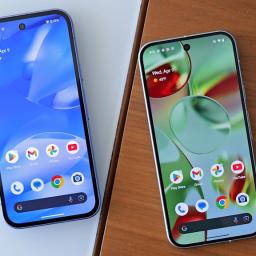 |
by Andre Revilla on (#6XXSH)
Android phones that support Qi2 wireless chargers that are magnetically secured in place might finally be hitting the market. Android Authority reports that Google plans to add Qi2 charging with the upcoming Google Pixel 10. The Qi2 standard was announced at CES in 2023, and was developed with substantial contributions from Apple. The new design iterated on the Qi standard by adding magnets that would help ensure a perfect alignment, among other improvements. That magnetic alignment tech was built on Apple's MagSafe technology.There was a lot of excitement around the standard coming to the Android ecosystem, but manufacturers dropped the ball. Displaying a total lack of urgency in implementing the standard, not a single Android device made by Samsung, Google or Motorola supported Qi2 in 2024.The team at Android Authority reports that they have viewed credible marketing materials intended for retailers that show that Google is working on a few magnetic Qi2 accessories meant for the upcoming Pixel 10." They suggest Google will name the magnetic ecosystem Pixelsnap" and at least three accessories to start. A Pixelsnap Charger, Charger with Stand and Ring Stand are set to be in the works for the new Pixel 10. Assuming that magnetic profiles are included as rumored, the Pixelsnap Charger with Stand sounds like the successor to Google's Pixel Stand. This would ostensibly allow users to magnetically snap their phones to the stand while the phone charges wirelessly.Android Authority reports that the Pixel 10 would support Qi 2.2, with a maximum hardware-supported charge rate of 60W, though Google will ultimately decide what rate of charging will be allowed on each compatible phone model.This article originally appeared on Engadget at https://www.engadget.com/mobile/smartphones/pixelsnap-googles-belated-answer-to-magsafe-could-arrive-alongside-the-pixel-10-184527063.html?src=rss
|
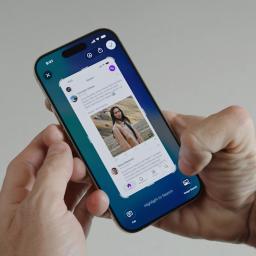 |
by Cherlynn Low on (#6XXSJ)
When it launched, Apple 's Visual Intelligence feature allowed you to point your compatible phone's camera at things around you and either perform a Google Image Search or ask questions via ChatGPT. At WWDC 2025, the company showed off updates to broaden the usefulness of Visual Intelligence, largely by embedding it into the screenshots system. To quote the company's press release, "Visual intelligence already helps users learn about objects and places around them using their iPhone camera, and it now enables users to do more, faster, with the content on their iPhone screen."This reminded me of the "onscreen awareness" that Apple described as one of Siri's capabilities when it announced Apple Intelligence last year. In that press release, the company said, "With onscreen awareness, Siri will be able to understand and take action with users' content in more apps over time." Though it's not quite the same, the updated screenshot-based Visual Intelligence more or less allows for your iPhone to serve up contextual actions from your onscreen content, just not via Siri.In a way, it makes sense. Most people are already accustomed to taking a screenshot when they want to share or save important information they saw on a website or Instagram post. Integrating Apple Intelligence actions here would theoretically put the tools where you expect them, rather than make users talk to Siri (or wait for the update to roll out). Basically, in iOS 26 (on devices that support Apple Intelligence), pressing the power and volume down buttons to take a screenshot will result in a new page being pulled up. Instead of the thumbnail of your saved image appearing in the bottom left, you'll see the picture take up almost all of the display, with options around it for editing, sharing or saving the file, as well as getting Apple Intelligence-based answers and actions at the bottom. In the bottom left and right corners sit options for asking ChatGPT and doing a Google Image Search respectively.Depending on what's in your screenshot, Apple Intelligence can suggest various actions below your image. This can be asking where to buy a similar-looking item, adding an event to your calendar or identifying types of plants, animals or food, for instance. If there's a lot going on in your screenshot, you can draw on an item to highlight it (similar to how you select an object to erase in Photos) and get information specific to that part of the image.Third-party apps or services that have enabled App Intents, like Google, Etsy and Pinterest, can also appear here so you can carry out actions within this space too. For example, if you've found a bookend you like, taken a screenshot and identified it, you can shop for it on Etsy or pin it on Pinterest.One aspect of this update to Visual Intelligence that gives me pause is that, for people like me who screenshot mindlessly and don't want to do anything other than get receipts, this might add a frustrating step between capturing a screenshot and saving it to Photos. It sounds like you may be able to turn off this interface and stick to the existing screenshot system, though. The examples that Apple gave for Siri's ability to understand what's on your screen felt somewhat similar. In its press release from last year, Apple said "For example, if a friend texts a user their new address in Messages, the receiver can say, 'Add this address to his contact card.'"Like Visual Intelligence in screenshots, this involves scanning the onscreen content for pertinent information and helping you put it in a place (like Contacts or Calendar) where it's most useful. However, the promise of Siri's new era was more about interacting with all parts of your phone, across first- and third-party apps alike. So you could ask the assistant to open an article you added to your Reading List in Safari or send photos from a specified event to a contact.It's clear Apple has yet to deliver these advancements to Siri, and like Craig Federighi said at the WWDC 2025 keynote, those might only be discussed later this year. Still, as we await that status update, the changes coming to screenshots might be a preview of things to come.This article originally appeared on Engadget at https://www.engadget.com/ai/ios-26-screenshots-could-be-an-intriguing-preview-of-apples-delayed-siri-rework-183005404.html?src=rss
|
 |
by Lawrence Bonk on (#6XXPB)
The long-anticipated F1 film comes to theaters on June 27. To celebrate the pending release, Apple has developed a haptic trailer exclusively for iPhones. This leverages the smartphone's Taptic Engine to let people "feel the action" right in the palm of their hands.Apple promises that viewers will "experience the power of the engines, the rumble of the curbs, and the intensity of every gear shift like never before with responsive vibrations." It's available to stream right now via the Apple TV app, but requires iOS 18.4 or later. Here's a regular trailer that won't make your hands rumble, but is still fun.F1 stars Brad Pitt and was directed by Joseph Kosinski, who made the box office monster Top Gun: Maverick. He also directed the underrated Tron: Legacy, though has no involvement with the upcoming Tron: Ares. Hans Zimmer made the score. Apple spared no expense here.To that end, the company is extremely bullish regarding the film. It's getting the full theatrical treatment, along with a nationwide IMAX release. Apple also featured the movie prominently at its recent WWDC event and screened it for attendees at the Steve Jobs Theater.
|
 |
by Andre Revilla on (#6XXJN)
Tesla CEO Elon Musk says that Robotaxi service is "tentatively" set to begin in Austin, Texas on June 22. This comes after the company said last month that it had already begun testing driverless Model Ys in Austin. Shortly after that, Bloomberg reported that Tesla had internally discussed a launch date of June 12, though the only publicly shared timeline has been sometime in June.The first Robotaxi Model Y operating without a person in the driver's seat was spotted on South Congress in Austin yesterday. It sported a decal on the side of the vehicle that read "Robotaxi" in the same font as Tesla's stylized version of Cybertruck. In the video, a person sitting in the passenger seat can be seen, though it's unclear what their role is.
|
 |
by Andre Revilla on (#6XXJP)
Disney and NBCUniversal have filed a joint suit against AI company Midjourney alleging copyright infringement on their various properties. The complaint, filed in federal district court in Los Angeles, includes images created by Midjourney that feature a wide variety of protected characters from each company's various properties, including Star Wars, Shrek, The Simpsons, Despicable Me and others. The 110-page suit alleges that the AI company helped itself to countless" copyrighted works when training its models that have been creating and disseminating innumerable" copies of these characters via AI-generated images.In the lawsuit Midjourney is described as "the quintessential copyright free-rider and a bottomless pit of plagiarism." Disney and NBCUniversal are the first major Hollywood players to enter the now crowded field of AI copyright infringement lawsuits; it comes against the backdrop of similar lawsuits against OpenAI, Meta and Perplexity AI.The intersection of art and artificial intelligence continues to be battled out in court, though a suit brought by two of the largest names in media properties carries immense weight. We are bullish on the promise of A.I. technology and optimistic about how it can be used responsibly as a tool to further human creativity," said Horacio Gutierrez, Disney's general counsel, in an email to The New York Times. But piracy is piracy, and the fact that it's done by an A.I. company does not make it any less infringing."In a separate email to The New York Times, Kim Harris, general counsel for NBCUniversal, said, We are bringing this action today to protect the hard work of all the artists whose work entertains and inspires us and the significant investment we make in our content."We've reached out to Midjourney for comment and will update if we hear back.Read the lawsuit below:This article originally appeared on Engadget at https://www.engadget.com/entertainment/disney-and-universal-studios-file-suit-against-midjourney-for-copyright-infringement-154206053.html?src=rss
|
 |
by Steve Dent on (#6XXCC)
Nintendo has sold 3.5 million Switch 2s in four days, setting a company record for a new console launch. That puts Nintendo on track toward its goal to sell 15 million units by March 2026 if it can keep up on the production side. By comparison, it took the original Switch nearly a full month to hit 2.7 million units sold, even though it launched at a considerably lower price ($300 compared to $450 for the Switch 2).To get a hold of one, fans entered lotteries to buy consoles directly from Nintendo, ordered online or simply lined up outside retailers like Game Stop when the Switch 2 went on sale last week. However, demand appeared to exceed the company's expectations, so President Shuntaro Furukawa apologized to customers that failed to pick one up, Bloomberg reported. The company also asked suppliers to boost production.With a successful launch under its belt, Nintendo's goal is to maintain momentum. The company no doubt learned some lessons last time around as it had supply issues during the first few months after the original's Switch's launch that constrained sales. US tariffs could also bite. During an investor call last month, Furakawa explained that additional tariffs could necessitate a price increase in the US, causing demand to fall.This article originally appeared on Engadget at https://www.engadget.com/gaming/nintendo/nintendo-sets-record-with-35-million-switch-2-units-sold-in-four-days-130050215.html?src=rss
|
 |
by Mariella Moon on (#6XXCD)
Hong Kong authorities have warned their residents against downloading a Taiwan-made game called Reversed Front: Bonfire, which they're accusing of advocating for armed revolution and promoting "secessionist agendas, such as 'Taiwan independence' and 'Hong Kong independence.'" As Bloomberg notes, this is the first time the special administrative region of China has invoked national security laws to ban a video game. The legislation, a national law from Beijing and a local security law passed in 2024, are supposed to address perceived threats and require internet service providers to comply with government mandate. Chinese authorities had previously ordered Google to block access to the protest song Glory to Hong Kong in the region.Reversed Front: Bonfire was developed by a group known as ESC Taiwan, who are outspoken critics of the China's Communist Party. The game disappeared from the Apple App Store in Hong Kong less than 24 hours after authorities issued the warning. Google already removed the game from the Play Store back in May, because players were using hate speech as part of their usernames. ESC Taiwan told The New York Times that that the game's removal shows that apps like theirs are subject to censorship in mainland China. The group also thanked authorities for the free publicity on Facebook, as the game experienced a surge in Google searches.The game uses anime-style illustrations and allows players to fight against China's Communist Party by taking on the role of "propagandists, patrons, spies or guerrillas" from Hong Kong, Taiwan, Tibet, Mongolia and Xinjiang, which is home to ethnic minorities like the Uyghur. That said, they can also choose to play as government soldiers.In its warning, Hong Kong Police said that anybody who shares or recommends the game on the internet may be committing several offenses, including "incitement to secession, "incitement to subversion" and "offenses in connection with seditious intention." Anybody who has downloaded the game will be considered in "possession of a publication that has a seditious intention," and anybody who provides financial assistance to it will be violating national security laws, as well. "Those who have downloaded the application should uninstall it immediately and must not attempt to defy the law," the authorities wrote.This article originally appeared on Engadget at https://www.engadget.com/gaming/hong-kong-bans-video-game-using-national-security-laws-124549944.html?src=rss
|
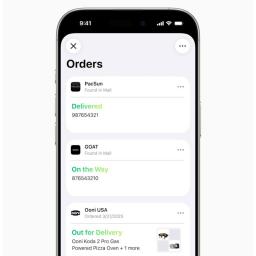 |
by Mariella Moon on (#6XXCE)
One of the upcoming changes to Apple Wallet is bound to become one of its most useful features if you frequently shop online and get deliveries. When you get iOS 26 on your iPhone, your Wallet app will start using Apple Intelligence's capabilities to automatically scan your emails and identify order tracking details sent by merchants or couriers. The app will then summarize and display those deliveries as cards. As MacRumors has noted, Wallet can already do that for purchases made using Apple Pay. With the update, you'll be able to keep track of all your deliveries from one place and get progress notifications.At the moment, access to the feature is still limited to developers who've installed the beta version of iOS 26. The feature itself is still in beta, and you will have to enable it by going to the Wallet and Apple Pay section in Settings, heading into Apple Pay Defaults and switching on Orders Found in Mail under Order Tracking.Apple announced its upcoming mobile platform at WWDC 2025, revealing an interface that has gone through a massive redesign. It features a "Liquid Glass" UI that's defined by icons, toolbars and tab bars with a see-through appearance. In addition to being able to track orders, the iOS 26 version of Wallet will allow you to create a Digital ID with a US passport and will also come with more detailed boarding passes. iOS 26 isn't coming out until this fall, but Apple plans to start rolling out public betas in July.This article originally appeared on Engadget at https://www.engadget.com/apps/apple-wallets-ios-26-update-scans-your-emails-for-package-delivery-tracking-123054484.html?src=rss
|
 |
by Sam Rutherford on (#6XXCF)
Back in 2017, it felt like handhelds were dying. The PlayStation Vita was suffering from a lack of support and the 3DS was already on its way out. But then the Nintendo Switch arrived and became the hybrid console that launched 1,000 portable rivals. It proved you could make a device that was powerful enough to play games on your TV but also small enough to take with you anywhere. And by the time everything is all said and done, there's a good chance it will be the highest-selling console of all time. But making a proper follow-up can be difficult. So for the Switch 2, instead of changing everything up again, Nintendo took the best features from the original, upgraded them and gave us more of what we love. And even though this is just the start, it feels like I've been enchanted all over again. Design The Switch 2's design is the most obvious example of Nintendo not straying too far from the original's template. That said, nearly every component has been tweaked or upgraded in some way. The console's slightly larger dimensions (10.7 x 4.5 x 0.55 inches and 1.2-pound chassis with Joy-Con) help make way for a bigger 7.9-inch display. In fact, almost everything has been embiggened, including the face buttons, analog sticks and rear kickstand, the latter of which opens even wider than before. However, the Switch 2's biggest upgrade is its new Joy-Con. There's a familiar matte finish with more subtle red and blue accents, but instead of sliding them on and off like before, Nintendo gave them a new magnetic attachment system that comes with a very satisfying thunk. Meanwhile, detaching them is dead simple thanks to a handy button next to each trigger. So not only do the Joy-Con feel more secure, they are a pleasure to clip on and off as the need arises. Sam Rutherford for Engadget Nintendo didn't stop there though, because hidden in the edge of each Joy-Con is a sensor that allows them to function as mice. I will admit that I thought this feature was a gimmick at first. But in games like Civilization 7 that are traditionally best enjoyed with a mouse, they serve as a very welcome alternative to classic gamepad controls. They also work surprisingly well on the arm of a sofa or even your leg. This is handy because if you're playing games on your TV, you might not have a table or some other flat surface within reach. Display The Switch 2's 7.9-inch LCD is a significant upgrade over the panel on its predecessor. Not only is it larger (up from 6.2 inches), it's also higher res (1080p vs. 720p) while boasting a 120Hz refresh rate and support for HDR. With its auto-brightness setting turned off, the screen tops out at around 400 nits, though in titles with HDR, I've found that number can hit 450 nits or more. The downside is that the Switch 2's LCD screen's black levels aren't quite as good compared to an OLED Switch. This can make dark backgrounds look closer to gray, especially when viewed in a low-light environment. Sam Rutherford for Engadget When docked, the Switch 2's visual prowess expands to 4K at 60 fps or 1440p at 120 fps, though it's important to remember that those settings may not be available for every game. Sadly, the console supports VRR (variable refresh rates), but that only applies to its onboard display. On the bright side, the Switch 2 does seem to have support for auto low latency mode (ALLM), which is good for anyone who plays fast-twitch games like shooters. Performance Judging the performance of a brand-new console is difficult because it often takes developers months or years to figure out how to truly optimize their games for a new platform. The Switch 2 features a chip from NVIDIA with a custom GPU that the company claims offers ten times more graphics power than what we got from the previous model, alongside support for features including DLSS and ray tracing. The console also comes with 12GB of RAM and 256GB of onboard storage, which can be expanded further using microSD Express cards. Sam Rutherford for Engadget First-party titles like Mario Kart World run beautifully, though we've sort of come to expect that from major tentpole releases from Nintendo. The only hint of stuttering I've seen is when I played four-player local co-op with Game Chat turned on and multiple video streams going at the same time. And even then, it's hard to tell unless you're really looking for evidence of slowdown. What might be the biggest indicator of the Switch 2's improved performance is the sheer number of AAA third-party ports available at launch. Cyberpunk 2077 looks excellent and without a direct side-by-side comparison with something like the PC version, it's difficult to spot where any graphical corners have been cut. And while Street Fighter 6 isn't quite as impressive since some of the flashier effects don't pop as much as they do on other consoles, it's still a very enjoyable experience. As someone who often criticized the performance of the original Switch as one of its weak points, I'm thoroughly encouraged by the increased power I've seen from the Switch 2 thus far. Backwards compatibility Sam Rutherford for Engadget One of the best things about the Switch 2 is that it supports wide backward compatibility with original Switch titles. The vast majority of games work as you'd expect, though there are some outliers, including titles like Ring Fit Adventure, as the Switch 2's larger Joy-Con don't fit inside the existing controller straps. Many of the NS1's accessories are also backwards compatible, so you can still play games like Ring Fit by pairing one of the original Switch's Joy-Con. The other current high-profile bug is an issue in Super Smash Bros. Ultimate that can cause the game to crash when someone chooses a Mii Fighter. Thankfully, Nintendo is aware and working on a fix. The real treat is that many older games look and run better on the Switch 2 than they did before. Super Mario Odyssey plays even smoother, while games like Legend of Zelda: Breath of the Wild are more beautiful than you remember thanks to an $10 upgrade pack (or free with Nintendo Switch Online Expansion Pack) that adds support for HDR, better graphics and more. However, the games that may have gotten the biggest boost are Pokemon Scarlet and Violet. Due to a free upgrade on the NS2, the game features a higher framerate, higher monster density, a longer draw distance and more. In some ways, it feels like a brand new game, and if it had launched like this back in 2022, Nintendo could have completely avoided one of the biggest knocks against it. Game Chat Another major addition to the Switch 2 is the arrival of a built-in chat feature, including a new dedicated button on the console's controller. Setup requires a handful of identity checks, but once you've sorted that out, it's incredibly easy to use. You can invite people from your friends list to impromptu lobbies or create/join more permanent hangouts. Once you're in a chat, adjusting your settings is as easy as hitting the C button. From there, you can choose from a handful of screen layouts and background options, along with the ability to share your video, do voice-only or activate speech-to-text (or text-to-speech). And if you have a camera attached, you can put your face in chat too. Sam Rutherford for Engadget Nintendo has generally done a great job of making it easy to jump in and out of chats. With support for up to four video feeds and a total of 12 people per lobby, there's plenty of room for everyone in your family, no matter if they're in the next room or on the other side of the planet. The small demerits to Game Chat are that its frame rate and video resolution are relatively low (same goes for camera footage if you have one attached). The option to delete your background (aka green screen) often looks rather pixelated and if you watch closely, you may see video windows stutter unless you pin a specific view to your main feed. That said, because Game Chat is more about enjoying the company of others instead of producing clips for social media, I'm not that bothered. You don't even need to be playing the same game (or any game at all, for that matter) to be in a lobby with others. It's easy to use and the vibes are good, which is what's really important. However, you will need to pay for Nintendo Switch Online, which costs $20 a year. The Dock Sam Rutherford for Engadget Like the console itself, Nintendo didn't stray too far from the design of the original Switch's dock for its successor. You still get a plastic shell with more rounded corners and a slot that the Switch 2 can fit inside. There area handful of ports in the back (covered by a removable plate) for power (via the included USB-C cable and adapter), HDMI and wired internet. The big upgrade is that now there's a fan inside to help keep the console cool and provide better sustained performance. Thankfully, it's relatively quiet, so you won't have to deal with an annoying hum distracting you from your games. The awkward thing about the Switch 2's dock is that it has one less USB port than before. Aside from the single USB-C connection in back for power, there are only two USB-A jacks on the side. This means if you want to connect accessories like the camera, which only comes with an included USB-C cable, you'll either have to get an adapter or plug it directly into the Switch 2 via its exposed port on top. Unfortunately, that will force you to disconnect the camera every time you undock the console, which is just kind of clunky. I wish Nintendo had made every USB port a Type-C connection, or at the very least included more than one. Battery Life The Switch 2 features a 5,220 mAh battery, which according to Nintendo should provide between 2 and 6.5 hours of runtime on a single charge. However, the console's longevity also greatly depends on the game you're playing along with other factors such as screen brightness and background downloads. Sam Rutherford for Engadget To help provide a slightly better picture of the Switch 2's power efficiency, I played a handful of titles starting at 100 percent battery and kept going until the console was dead with the screen set to max brightness (around 400 nits) and auto-brightness disabled. These settings are meant to provide a consistent but also conservative look at the console's runtime, as it's very possible to increase longevity by doing things like lowering brightness. In Mario Kart World, the Switch 2 lasted two hours and 23 minutes, which is on the lower end of Nintendo's official estimate. Meanwhile, in the NS2 edition of Legend of Zelda: Breath of the Wild, the console fared a bit better with a time of 2:56. That said, the game with the best battery life I've tested so far is Puyo Puyo Tetris 2S at four hours and 15 minutes, which shouldn't be a big surprise as it's a port of a decade-old 2D title. Sam Rutherford for Engadget For some folks, these numbers might be disappointing. I certainly would love an extra 30 to 60 minutes of battery life, but these stats are generally in line or slightly better than what we get from rivals like the Steam Deck and ROG Ally X. And remember, when compared to practically all of its PC-based competition, the Switch 2 remains a much sleeker device. Another helpful battery-related improvement is the addition of a charging limit, which allows the Switch 2 to automatically stop at a certain percentage to help maintain the power pack's longevity. But my favorite little detail is now the Switch 2 will display a small battery icon when you drop it in the dock because the screen peeks out a bit, so you always know for sure when it's charging. Cost considerations At $450 for the console alone or $500 for the bundle with Mario Kart World, the Switch 2 is priced significantly higher than the original, which cost $300 at launch (though that increase is closer to $50 when adjusted for inflation). However, when you include the price of accessories and games, the total adoption cost for a Switch 2 can be substantially higher. I purchased a standalone console along with physical versions of Mario Kart World and Legend of Zelda: Breath of the Wild (NS2 Edition) and one Pro Controller for $745.75. But after you tack on another $50 for one year of Nintendo Switch Online + Expansion, my grand total was just shy of $800. Sam Rutherford for Engadget Everyone has different opinions on what they consider disposable income, but that's still a lot of money to spend on a new console and two games. Here's hoping this breakdown helps people think about how the Switch 2 will impact their budget. Important notes
|
 |
by Lawrence Bonk on (#6XXCG)
Google's impressive Beam video conferencing technology has finally been integrated into an actual product that will be available for purchase. That's the good news. The bad news? The HP Dimension system is going to cost a whopping $25,000. This is an enterprise product through and through.However, the device certainly looks spiffy. The HP Dimension with Google Beam combines six cameras, a spatial audio system and adaptive lighting to allow for highly immersive virtual meetings. AI wizardry brings eye contact into the mix. All of this helps deliver "a deeply immersive experience that replicates the feeling of being in-person, with no headsets, glasses or wearables required."HPWe actually tried this tech, back when it was called Project Starline, and came away impressed. It makes calls "appear fully 3D from any perspective." Algorithms combine live footage from the six cameras to render a pseudo-holographic version of the caller. It tracks head movements to ensure it delivers all of this visual data to eyes at the correct angle, all at 60FPS.We found that the simple act of the person on the other end of the call holding out an apple for us to touch "was so realistic" that it felt like we could reach out and grab the fruit. This is a telepresence dream.In addition to the Dimension system, HP is releasing a microphone that integrates with the new teleconferencing tech. The Poly Studio A2 Table Microphone works to extend "crystal-clear audio" further away from the Beam system, which should be a boon for medium or large-sized conference spaces. Users can daisy chain up to eight microphones together, though everything requires a standalone bridge device to operate. The microphone costs $329 and the bridge costs $549. This tech can also be used with more traditional setups.All of this stuff will be available later in the year. There's one caveat: Not only does the system cost $25,000, plus any of the aforementioned audio accessories, but users have to plunk down for access to the Beam service itself. Google has yet to release a pricing model for this.This article originally appeared on Engadget at https://www.engadget.com/ar-vr/the-first-google-beam-device-is-the-25000-hp-dimension-120016865.html?src=rss
|
 |
by Anna Washenko on (#6XX0V)
OpenAI is keeping up its rapid-fire pace of new AI releases. The company introduced the o3 and o4-mini models to its ChatGPT platform in April. At the time, the business promised that a pro model of the o3 was on the way, and that version became available today.Both the o3 and o4-mini models are meant to use and combine all the tools under ChatGPT's umbrella. When OpenAI adds the "pro" designation to a model, it's a version that has been built to spend longer answering queries to provide better and more accurate responses. "We recommend using it for challenging questions where reliability matters more than speed, and waiting a few minutes is worth the tradeoff," the company said in the release notes for the o3-pro. In the testing assessments shared, the o3-pro delivered better benchmarks than the o3 and the o1-pro options.There are some restrictions on the other ChatGPT services the o3-pro can use. Image generation and Canvas are not supported, so users will need to turn to different models for those features. The o3-pro is available today for ChatGPT Pro and Team users, while Enterprise and Edu customers will have access to this option next week.This article originally appeared on Engadget at https://www.engadget.com/ai/openai-adds-the-o3-pro-model-to-chatgpt-today-212126136.html?src=rss
|
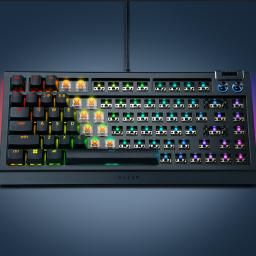 |
by Will Shanklin on (#6XWYG)
On Tuesday, Razer launched its first keyboard for the DIY set. As its name implies, the BlackWidow V4 75% Barebones is the popular mechanical keyboard, only without keys and keycaps. It could be a solid option if you like Razer's design and Chroma RGB but want to bring your own keys. Otherwise, the Barebones BlackWidow is identical to the fully assembled variant. It still supports 3-pin or 5-pin mechanical switches and custom keycaps. It offers a polling rate of up to 8,000Hz with Razer's HyperPolling tech. Razer Other details include factory-lubricated stabilizers for smoother keystrokes and dual-layer dampening foam. It even has pre-applied tape to soften higher frequencies. For a full rundown of the keyboard's feature set, Engadget's Igor Bonifacic reviewed it for IGN in 2023. At $140, the black barebones version is $60 cheaper than the pre-assembled version. The white variant is slightly less thrifty at $150. (Unfortunately, you can't get a barebones one in phantom green.) You can order the BlackWidow V4 75% Barebones today on Razer's website. This article originally appeared on Engadget at https://www.engadget.com/computing/accessories/razer-launches-its-first-barebones-mechanical-keyboard-205043334.html?src=rss
|
 |
by Jessica Conditt on (#6XWYH)
Welcome to Video Games Weekly on Engadget. Expect a new story every Monday, broken into two parts. The first is a space for short essays and ramblings about video game trends and related topics from me, Jess Conditt, a reporter who's covered the industry for more than 13 years. The second contains the video game stories from the past week that you need to know about, including some headlines from outside of Engadget.Please enjoy - and I'll see you next week.Summer Game Fest 2025 will be remembered as the one that happened while the Waymos burned.The SGF Play Days event space, where games media and influencers meet up with developers over a long weekend, is in the fashion district in Los Angeles, and this year it was a few miles from the heart of sprawling protests against ICE. After months of inhumane and legally dubious deportations of LA residents by masked federal agents - emboldened by President Donald Trump's far-right extremism and equipped with weapons built for war - the bubble of resistance popped. Protestors hit the streets after ICE officers swept up dozens of people across LA in another round of coordinated raids on Friday, June 6. The protests grew over the weekend and Trump called in the National Guard, followed by the Marines. Militarized LAPD officers attacked people with horses and batons, and they fired rubber bullets into crowds and directly at one journalist. On Sunday evening, protestors lit a line of unoccupied Waymos on fire.The thick, black smoke was visible from the Play Days lot. I saw it as I was leaving the media lounge, heading toward the food trucks, and it stopped me in my tracks just in front of the Capcom booth. The low buzz of helicopters and the cries of police sirens had been a constant companion that weekend, but the smoke was new. I stopped and took a photo as upbeat reggae music pumped out of the speaker beside me. Around the corner, an actor dressed as a Fortnite banana in a suit was enticing passersby to play Ddakji as part of a cross-promotional effort with Squid Game. The dissonance made my head spin.The sickly pallor of encroaching authoritarianism has hung over every video game convention in the past six months - because it's shadowed literally everything in the United States this year. I've spent a significant amount of this time actively shutting down thoughts about Project 2025, government-sponsored human trafficking, neo-Nazis and all manner of hateful, bigoted policies targeting the United States' most vulnerable people, because if I didn't, the stress of these realities would consume me. I think most of us are doing something similar nowadays. We have to deprioritize specific thoughts at certain times, in order to get work done, maintain relationships and make it through the day. Having to ignore these monumental things in favor of, at least in my case, video games is a mindfuck.The smoke from the burning Waymos, visible from the main alleyway at SGF, felt like a physical manifestation of this constant internal tension. Video games are a vehicle for connection and expression, and they're deeply valuable to society - but, as with anything else, their importance is a matter of perspective.Jessica CondittThe newsEverything - like, everything - announced at Summer Game Fest 2025Our SGF 2025 roundup post is a comprehensive rundown of all the news from the show, from Day of the Devs to the big Xbox showcase. We'll be adding our hands-ons and interviews as they're published over the coming week right at the top of this article, so feel free to keep checking back. Or, Engadget's Gaming hub will keep you covered.Resident Evil Requiem is a thingArguably the biggest bit of news out of SGF 2025, Resident Evil Requiem is due out on February 27, 2026. It's a mainline Resident Evil title starring FBI agent Grace Ashcroft, and it features familiar locations from the series, including Raccoon City's demolished police department.The Outer Worlds 2 release dateObsidian's sci-fi RPG The Outer Worlds 2 is heading to PC, PlayStation 5 and Xbox Series X/S on October 29 - just in time for everyone to understand your fancy-man moon-head Halloween costume.There's an official Xbox handheld, but it isn't made by XboxAfter months of rumors about Microsoft and ASUS teaming up to make an Xbox-branded handheld gaming device, we finally have relief. The ROG Xbox Ally and ROG Xbox Ally X are due out this holiday season, capable of playing Xbox games natively via the cloud or a remote console connection, and with support for other popular PC storefronts like Steam, GOG and Battle.net. There's no word on price or an exact release date yet, but the Xbox handhelds are definitely, finally coming.Relooted looks like the kind of fun we need right nowIf you only have time to read about one game from SGF 2025, acquaint yourself with Relooted from South African indie studio Nyamakop. It's a heist game about rescuing African artifacts from the Western colonizers who stole them, and it's filled with puzzles, action and Afrofuturism. This is one to keep an eye on.Enter the world of Mat Smith writeupsEngadget's UK Bureau Chief Mat Smith was on the ground at SGF 2025 and he's already published a trio of stories directly from the show, each one more delightful than the last. There's a look at Lumines Arise, complete with input from director Takashi Ishihara; a preview of Patapon spiritual successor Ratatan; and Mat's thoughts on Supermassive's sci-fi romp Directive 8020. There's more coming from Mat, too, so keep that Engadget Gaming tab open.Sword of the Sea is a return to form for the artist behind JourneyI had a lovely little chat at SGF with Matt Nava, the artist responsible for Journey, Abzu, The Pathless, and the upcoming sand-surfing game, Sword of the Sea. Nava has spent the past decade or so running from his own shadow, but with Sword of the Sea, he's finally following his intuition again. This story includes impressions of the game - spoiler: it's fabulous - and development insight from Nava.This article originally appeared on Engadget at https://www.engadget.com/gaming/video-games-weekly-the-one-that-happened-while-the-waymos-burned-192959322.html?src=rss
|
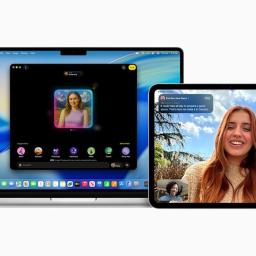 |
by Igor Bonifacic on (#6XWVS)
If you weren't paying close attention to Apple's WWDC 2025 keynote, it was easy to miss one of the more notable stories out of the event. For a conference where it aims to show itself as an innovator, this year Apple looked like it was out of new ideas. Whether it was digging up old design concepts or sherlocking even more third-party apps, we saw a company dependent on the work of others. But nowhere was that dependence more striking than the one Apple now has with OpenAI.For many of the new Apple Intelligence features the company announced on Monday, it was quick to note users could turn to OpenAI's models, instead of its own in-house systems, to carry out a task. Don't like the portraits of your friends Image Playground is generating? ChatGPT can help. How about the analysis offered by Visual Intelligence? If Apple's model isn't doing it for you, ChatGPT can assist there, too.Those are just two examples. There are others. OpenAI's models are also available through the updated Shortcuts app, and, perhaps most notably, in the new version of Apple's Xcode app development suite. In fact, according to Engadget managing editor Cherlynn Low, who was on the ground in Cupertino, the news that ChatGPT would come built directly in Xcode got one of the loudest cheers of the presentation.It all felt like an admission by Apple that its own AI models, even the more private, on-device one it would make available to developers through a new framework, aren't up to snuff. Apple's dependence on OpenAI is not new. ChatGPT has been an integral part of Apple Intelligence since the start, but what is surprising is how much deeper that dependence has become.Before Monday, we all knew the company was behind in the AI race. At WWDC 2025, Apple offered few reassurances it would catch up anytime soon. For instance, it had almost nothing to say about the more personalized Siri it previewed at last year's conference."As we've shared, we're continuing our work to deliver the features that make Siri even more personal," said Craig Federighi, the company's senior vice president of software engineering. "This work needed more time to reach our high-quality bar, and we look forward to sharing more about it in the coming year."The time frame of "in the coming year" would suggest the new Siri may not arrive before the start of 2026 at the earliest. Six months to a year is an eternity in the tech world, especially when Apple's competitors are moving so quickly.As if to punctuate things, OpenAI announced on Saturday it had begun rolling out an update to Advanced Voice that gives ChatGPT more subtle intonation, realistic cadence and expressiveness. Those are all upgrades that Siri could use.Of course, the irony that Apple should choose to turn to OpenAI for help in the AI race is one almost certainly not lost on anyone at either company.In May, OpenAI announced it was buying Jony Ive's io hardware startup (for a reported $6.5 billion) to support its ambition to build an AI device. In an interview with The New York Timesabout the acquisition, OpenAI CEO Sam Altman didn't explicitly mention Ive's former employer, but he was obviously thinking about Apple and the iPhone throughout the conversation. "We've been waiting for the next big thing for 20 years," he said at one point. "We want to bring people something beyond the legacy products we've been using for so long."The fact the AI devices we've seen so far, including the AI Pin and R1, haven't been a success, does not mean Apple is safe from disruption. For one, the pedigree of OpenAI and Jony Ive (even if you include misses like the MacBook Pro with its terrible butterfly keyboard) surpass that of Humane and Rabbit. One of the people that is now working for OpenAI as part of the io deal include Evans Hankey, who was Apple's head of hardware design for three years after Ive's departure from the company.You could make the argument that Apple has found itself in similar situations before and come out unscathed. For years, the company has depended on Google to offer access to a search engine to its users (and Maps before that), but this feels different to me. What's going on in the AI industry doesn't play to the company's usual strengths. The technology is moving faster than Apple's annual release schedule, with new, more powerful models being announced almost every week. It's not a space where the company can rely on its usual strategy of waiting for others to work out the wrinkles before it dives in itself.It's too early to know if Apple's partnership with OpenAI will ultimately hurt the tech giant, but it's safe to say OpenAI isn't content with being merely a supporting player. Apple is still one of the wealthiest companies in the world, with billions of dollars of cash on hand - but being so dependent on OpenAI is a rare sign of vulnerability in a crucial part of the tech industry.This article originally appeared on Engadget at https://www.engadget.com/ai/openai-won-wwdc-2025-191216116.html?src=rss
|
 |
by Devindra Hardawar on (#6XWVT)
It's hard to look at Apple's new "Liquid Glass" aesthetic and not think about Windows Vista, Microsoft's much-maligned OS which also touted transparencies and glass-like effects as a bold new vision for computing. You can see the similarities between Apple's UI and Vista's "Windows Aero" design language everywhere, from the glassified app icons in iOS 26 and macOS Tahoe 26 which look a lot like VIsta's glossy icons, to the transparent backgrounds used in drop down menus, which hearken back to VIsta's transparent window borders. The key difference is that Apple is just doing it all better. (Sorry, not sorry, Windows fans.)While Microsoft started off with an intriguing idea, it failed to execute the Windows Aero UI well in Vista. Mostly, that's because Vista itself was a huge mess - it was far slower than Windows XP, it was notoriously buggy and it handled drivers poorly. And if you actually wanted to partake in the glory of Aero transparency bars, you needed a computer with a powerful GPU. That was far more rare in 2007 than it is today, when even integrated graphics can run basic 3D and fancy UI elements well. With its homegrown chips, Apple also provides decent graphics capabilities in its devices that support iOS 26, iPadOS 26 and other new software releases with Liquid Glass.The Windows Vista start menu and desktop.Paowee/WikipediaIt also helps that Liquid Glass isn't really a huge change for Apple, unlike the jump from Windows XP to Vista. Apple has been creeping towards a flashier UI and more widespread use of transparencies ever since iOS 7 was released in 2013, which dropped the archaic skeuomorphic design trend in favor of a flatter and more stylish aesthetic. So sure, your icons and menus may have a bit more shine to them in iOS 26, but they mostly work the way you remember. (You could also argue Apple itself kickstarted the move towards transparencies in desktop operating systems with the original Mac OS X in 2001, which gave its iconic dock a glossy background.)I can argue for the overall wisdom of Apple's Liquid Glass, at least compared to Windows Vista, and personally I also think it gives iOS a much-needed dose of personality. But I can't really convince you otherwise if you think it looks ugly, as many of my Engadget colleagues do. Senior News Editor Avery Ellis calls it "busy and obnoxious," and Editor-in-Chief Aaron Souppouris noted that "it truly feels like Aero, rooted in the mid '00s.... I don't need light refracting around my pause button." Fair complaints! And as usual, you can also reduce transparency effects and motion elements in Apple's Accessibility Settings, if these elements truly bother you.AppleBut after spending a bit of time with the first iOS 26 developer beta, I'm more intrigued by Liquid Glass than anything else. It makes app icons look like tiny jewels that I just want to touch, and I dig the transparency effects throughout the OS - they almost seem like a preview for a future where we're using holographic Apple devices. (That's also something I felt while using visionOS on the Vision Pro, which served as the launchpad for Liquid Glass.) I also genuinely love iOS 26's revamped Safari, which lets you browse completely in full screen. As you scroll down, the location bar at the bottom of your screen shrinks and gets out of the way. But if you scroll up or tap into the location bar, it pops back up to give you the sharing and navigation options you're used to.Devindra Hardawar for EngadgetIt could also be that I'm a sucker for novelty. Back in my Windows XP days, I used to use apps like WindowBlinds to customize the OS and add transparent effects. And there are signs that Apple may be going a bit too far with transparencies, like with the iOS 26's Control Center (above). It looks fine if you're swiping it down while inside an app, but if you're on the home screen, it's just one of many levels of glass-like windows. I could see that being a bit overbearing for some users.It's also worth noting that interface redesigns are often rejected at first glance, especially since you're seeing them abstracted through screenshots and videos. Even Apple's slick marketing magic doesn't replicate the experience of using Liquid Design. In my experience, iOS 26 really isn't that different from everything that came before. Once you get over the initial shock of a new interface, you may see it with new eyes.AppleThere's also still plenty of time until Apple's new operating systems arrive this fall though, and the company is often quick to tweak major design changes if beta users complain about them. I could see Apple toning down the Control Center's transparent background, or even better, giving users more control over the amount of Liquid Glass elements on your screen. Personally, I don't mind it when companies stretch their interface ideals a bit too far - there's always room to move back. That's far better than being too conservative and never really pushing your aesthetic vision forward.This article originally appeared on Engadget at https://www.engadget.com/computing/apples-liquid-glass-is-windows-vista-done-well-181954910.html?src=rss
|
 |
by Karissa Bell on (#6XWRS)
Snap's next generation of standalone augmented reality glasses will arrive next year and will be smaller, lighter and more powerful than the developer-focused device the Snapchat maker introduced last year. CEO Evan Spiegel announced the upcoming glasses, which will be called "Specs," during a keynote at Augmented World Expo (AWE)."Specs are coming next year, in a much smaller form factor, at a fraction of the weight, with a ton more capability," Spiegel said. He said the glasses will be "ready for public release," but didn't provide details on how much they may cost. The current fifth-generation glasses are available only to approved developers willing to commit to a year-long $99/month subscription.Still, a smaller pair of AR glasses from Snap should be welcome news to Snapchat fans curious about the company's standalone AR device, but who may have been put off by its bulky, oversized design. Spiegel shared few details about the glasses, but in a blog post Snap suggested that AI will play an important role. "It's clear that today's devices and user interfaces are woefully inadequate to realize the full potential of AI," the company wrote. "Chatbots will soon give way to immersive experiences that bring AI into the world through augmented reality, empowering us to express ourselves, live in the moment, learn about the world, and have fun together."The existing version of Spectacles already has some AI-powered experiences, thanks to a partnership with OpenAI. And Snap today also announced new integrations with OpenAI and Google that allow developers to build multimodal lenses for Spectacles that can use the built-in cameras to react to the wearer's surroundings. Developers have already created experiences for recipe generation, translation and currency conversion, Snap said.Spiegel did confirm that the AR lenses that developers are building now will work with the next-generation of frames. So whenever they do launch, there should be an established catalog of AR experiences for the glasses.This article originally appeared on Engadget at https://www.engadget.com/ar-vr/snap-says-new-lightweight-ar-glasses-will-come-in-2026-171020059.html?src=rss
|
 |
by Andre Revilla on (#6XWRV)
Sonos has announced a major software update for its flagship Sonos Ace headphones that brings some new features to the premium wireless cans. Chief among them is the long-awaited TrueCinema feature, which was first promised as upcoming when the headphones launched in 2024. TrueCinema uses a compatible Sonos soundbar to measure the acoustic dynamics of the room you're sitting in. It then uses that data to increase the accuracy of the spatial sound in your headphones, in the same fashion as Trueplay on Sonos speakers. The idea is for the audio the user hears to mimic that of a well-balanced surround sound system thats sits right in the room you're listening in.TV Audio Swap is also getting an update and will now support two sets of Sonos Ace headphones synced to the same compatible soundbar, where it previously supported just one set. This feature allows users to seamlessly transfer the audio from their soundbar to their headphones.The update also improves the headphones Active Noise Cancellation by leveraging on-board sensors to adapt to a user's hair, glasses or hats in real time. Using the sensors, the Sonos Ace will then compensate for sound leaks.Some improvements to call quality are also coming to Sonos Ace with the addition of SideTone, a feature that plays a user's voice back to them at low volume while on a call. The audio fidelity on phone calls has also received a bump through this update, though details on what bitrate or exactly how it was improved are not available.Jason White, head of software at Sonos, said the company's goal has been to share meaningful software updates that deliver new enhancements to existing products. Our goal has always been to create products that earn their place in people's lives for years, and this Sonos Ace update is a great example of that. It proves that your best tech investment doesn't need to be your newest, it just has to be built right," White said.This update launches globally today and is available through the Sonos app.This article originally appeared on Engadget at https://www.engadget.com/audio/headphones/sonos-ace-headphones-get-long-awaited-truecinema-sound-and-more-in-big-update-163012056.html?src=rss
|
 |
by Steve Dent on (#6XWRW)
Qualcomm's has launched its latest processor for smart glasses, and though it's a modest upgrade over the previous chip, it has a new trick. The Snapdragon AR1+ Gen 1 can run AI directly on devices with no need for a smartphone or cloud connection, allowing users to go out or do chores with only their smart glasses, the company claims. The chip could appear in next-gen AR glasses from the likes of Meta and XReal.Smart glasses often require large temple arms to accommodate chips and other components, but the AR1+ Gen 1 is 28 percent smaller than the the AR1 Gen 1, so it allows for a 20 percent temple height reduction. At the same time, it requires less power across key use cases including computer vision, wake with voice, Bluetooth playback and video streaming. Qualcomm also promises "premium" image quality via technologies like binocular display support, image stabilization and a massive multi-frame engine.QualcommThe key feature, though, is the on-glass AI powered by Qualcomm's 3rd-gen Hexagon NPU, with 1 billion small language model (SLM) parameters on-glass. That allows it to run AI assistants that use SLMs like Llama 1B, with users speaking commands and seeing the results displayed on the glasses as text."While on stage, I was at the 'supermarket' and asked my glasses for help with fettuccine alfredo I needed to make for my daughter's birthday party," wrote Qualcomm SVP of XR Ziad Asghar. "This demonstration was a world's first: an Autoregressive Generative AI model running completely on a pair of smart glasses."Qualcomm shouted out Meta's Ray-Ban glasses as well as its chunky Orion AR glasses prototype as examples of where smart glass technology is heading. It then added that tech like its Snapdragon AR1+ Gen 1 chip will enable "sleeker form factors that don't compromise on the ability to run AI models." Reading between the lines, you can expect the chip to appear in ever-slimmer standalone AI-powered smart glasses in the near future.This article originally appeared on Engadget at https://www.engadget.com/wearables/qualcomm-says-its-new-ar1-gen-1-chip-can-handle-ai-directly-on-smart-glasses-163002410.html?src=rss
|
 |
by Lawrence Bonk on (#6XWRX)
OpenAI has inked a deal with Google to begin using the latter's cloud service to meet its growing needs for increased computing capacity, according to a report by Reuters. This is something of a surprise, given that Google and OpenAI are rivals in the AI space.The terms of the deal remain unknown, but reporting indicates it has been in the negotiation phase for the past several months. This marks OpenAI's latest move to diversify its compute sources away from Microsoft Azure.Microsoft had been OpenAI's exclusive data center provider until January, after OpenAI CEO Sam Altman blamed the lack of compute capacity for the delay of several products. The company made a deal in March with CoreWeave to provide increased cloud compute capacity. That deal was worth nearly $12 billion.Microsoft Azure may no longer be the exclusive cloud provider for OpenAI, but it's not as if the two companies have parted ways. OpenAI still relies heavily on Azure and the corporations are currently in negotiations to revise the terms of their partnership, which will likely revise the equity stake Microsoft holds in OpenAI.However, this is certainly a win for Google Cloud. ChatGPT poses the biggest threat to Google's search business in years, and this deal could indicate a softening between the two companies. In any event, it'll certainly bring a whole lot of money into Google Cloud's coffers. The platform made $43 billion last year and accounted for 12 percent of parent company Alphabet's overall revenue. The addition of OpenAI to its customer portfolio will likely extend those numbers dramatically.
|
 |
by Lawrence Bonk on (#6XWRY)
There's a new (ish) retro console on the block. The ModRetro Chromatic had a soft launch last year but is now "permanently in stock" for consumers. This is another machine that runs Game Boy and Game Boy Color cartridges, like the beloved Analogue Pocket and others.The Chromatic features a magnesium alloy build, so it should take a licking. It also features a backlit screen - something the original Game Boy lacked. As a matter of fact, Nintendo didn't fully embrace backlighting technology until midway through the life of the Game Boy Advance.
|
 |
by Karissa Bell on (#6XWRZ)
Nearly two years after launching Threads, Meta is finally giving in to users on one of the most requested features for the service: direct messaging. The company is beginning to test a dedicated inbox for Threads, beginning with Hong Kong, Argentina and Thailand, Mark Zuckerberg revealed in a post on Threads.Threads has had some messaging capabilities since last year, but the feature only allows users to send Threads posts to friends via their Instagram DMs. This is more than a little clunky as it requires switching back and forth between apps. It's also been the source of some confusion - at least among my friends - because it allows you to send Threads posts to contacts on Instagram even when they don't have a corresponding Threads account. For me, this means I sometimes send a post to a friend on Instagram only for them to tell me they can't view it properly because they don't use the app.Needless to say, all this has been far from ideal. And, unsurprisingly, DMs have been a highly requested feature from Threads users. But Meta executives - and Instagram head Adam Mosseri in particular - have been inexplicably skeptical of the feature. Mosseri said last year that he wanted to "make the Instagram inbox work" for Threads rather than build out a separate messaging feature for the app.That's finally changing, though. Meta is beginning its initial tests of a Threads-specific inbox this week. The feature will only support 1:1 chats - at least for now - so it will still be much more limited than what's available on Instagram or even X. It will also only be available in a couple of countries to start, though Meta says it plans to expand to more regions "soon."This article originally appeared on Engadget at https://www.engadget.com/social-media/threads-is-finally-getting-its-own-dm-inbox-160001216.html?src=rss
|
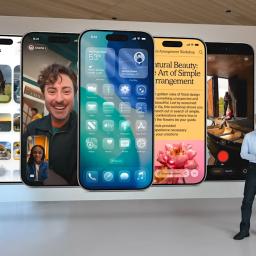 |
by Devindra Hardawar on (#6XW7M)
In this special episode, recorded live in Cupertino, Cherlynn and Deputy Editor Nathan Ingraham are joined by the Washington Post's Chris Velazco and Wired's Julian Chokkattu to discuss Apple's announcements at WWDC 2025. Though the announcements were all over the place and felt difficult to judge until they roll out to devices, our guests and hosts agree that they felt more meaningful than past WWDCs.Subscribe!
|
 |
by Andre Revilla on (#6XWNC)
Nintendo just dropped a trailer for a Splatoon spinoff game. Titled Splatoon Raiders, the third-person paint slinging shooter spinoff will be released exclusively on the Switch 2. This marks the first spinoff in the franchise and will take players to a new location called the Spirhalite Islands.While details are sparse at this early stage, the trailer mentions players will take on the role of a mechanic" alongside Deep Cut, a fictional band in the Splatoon universe. There's no mention of multiplayer (and no footage of it in this teaser), so Splatoon Raiders may well be a single-player experience. While the initial launch will be exclusive to Nintendo's newest handheld, the trailer says that research is still underway," implying there may be future releases on additional consoles.A substantial update for Splatoon 3 was also announced, with version 10.0 landing on both Switch and Switch 2 June 12. Included in the update is the Splatlands Collection, a cache of 30 new weapons from the Barazushi and Emberz in-game brands. While they are based on previous weapons, they will sport new designs, sub weapons and specials.The update also includes matchmaking improvements, with an added metric called Series Weapon Power, which will track your effectiveness per weapon based on your win-loss ratio in battles. This new metric will be considered when pairing you with other online players. Version 10.0 is also bringing back Urchin Underpass, a popular multiplayer map from the original Splatoon game. Nintendo says that Switch 2 players will notice more detailed visuals and improved performance with this update.Alongside the Animal Crossing franchise, Splatoon and its sequels have been star properties for Nintendo, and have sold over 30 million copies worldwide. The Nintendo Switch 2 was released on June 5 and has been hard to find in stock during its first launch week.This article originally appeared on Engadget at https://www.engadget.com/gaming/nintendo/splatoon-spinoff-game-will-launch-exclusively-on-switch-2-151541869.html?src=rss
|
 |
by Kris Holt on (#6XWND)
Looking for a budget-friendly iPad you can use for everyday tasks, like catching up on emails and messages, then reading the latest news before streaming a show? This might be the deal for you. The A16-powered iPad (a model that Apple released just a few months ago) has dipped to $299. That's $50 off the list price. The tablet briefly dropped to $278 at one point. However, this is the best price we've seen for this iPad otherwise. This 11-inch iPad has 128GB of storage and has Wi-Fi 6 connectivity (no LTE capabilities here). The discount applies to all four colorways: blue, pink, silver and yellow. This is our current pick for the best budget iPad. We gave it a score of 84 in our review. We feel that Apple could stand to upgrade the entry-level iPad's display, which does not have an anti-reflective coating and has a 60Hz refresh rate (which is the bare minimum for a new device these days). The screen isn't laminated, either - there's a gap between the actual panel and the glass that encases it. While this is good for repairability, we feel that it makes the screen look cheaper. Actions like writing notes with an Apple Pencil feel less natural than on the likes of the iPad Air too. Speaking of the Apple Pencil, the A16 iPad isn't compatible with the second-gen model or the Pencil Pro. As such, the only pressure-sensitive Apple Pencil that works with this iPad is the original model from 2015, which doesn't attach to the tablet magnetically. The USB-C Pencil can stick to the tablet, but it does not offer wireless charging or pressure sensitivity. Still, perhaps you don't care about doodling or taking handwritten notes on an iPad. If that, the screen issues and the lack of Apple Intelligence generative AI features (this model doesn't support them) don't matter to you, this iPad might be all you need. The chip is fast enough to handle everyday tasks, while the storage and RAM increases compared to the previous model are very welcome - especially considering that Apple didn't bump up the price. The build quality and battery life are still solid overall too. Check out our coverage of the best Apple deals for more discounts, and follow @EngadgetDeals on X for the latest tech deals and buying advice.This article originally appeared on Engadget at https://www.engadget.com/deals/apples-latest-entry-level-ipad-is-back-on-sale-for-299-145940023.html?src=rss
|